MORE THAN 9 LIVES
Improving Shelter Cat Intake and Adoption Rates
More Than 9 Lives is a thesis project I developed for my MFA in Graphic Design at Liberty University that investigates the causes of shelter cat overpopulation and explores how design can support solutions. Through research into trap-neuter-return programs, adoption barriers, and advocacy strategies, the project aims to inform and equip shelters and advocates with visual tools that promote cat welfare and improve adoption outcomes.
This presentation offers a condensed overview of my thesis. For a complete look at the research, visual development process, and final design solution, the full thesis PDF is available for download.
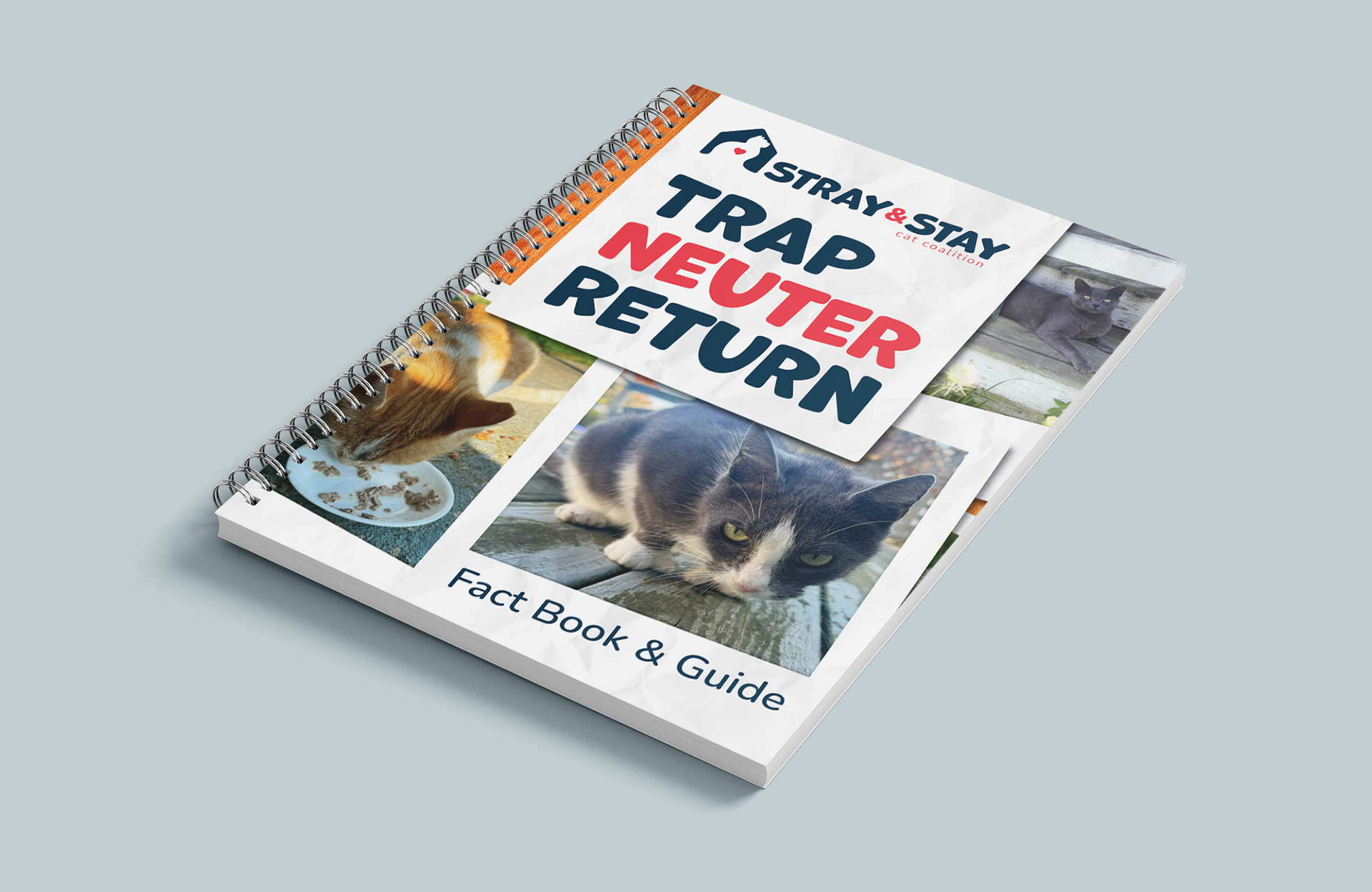

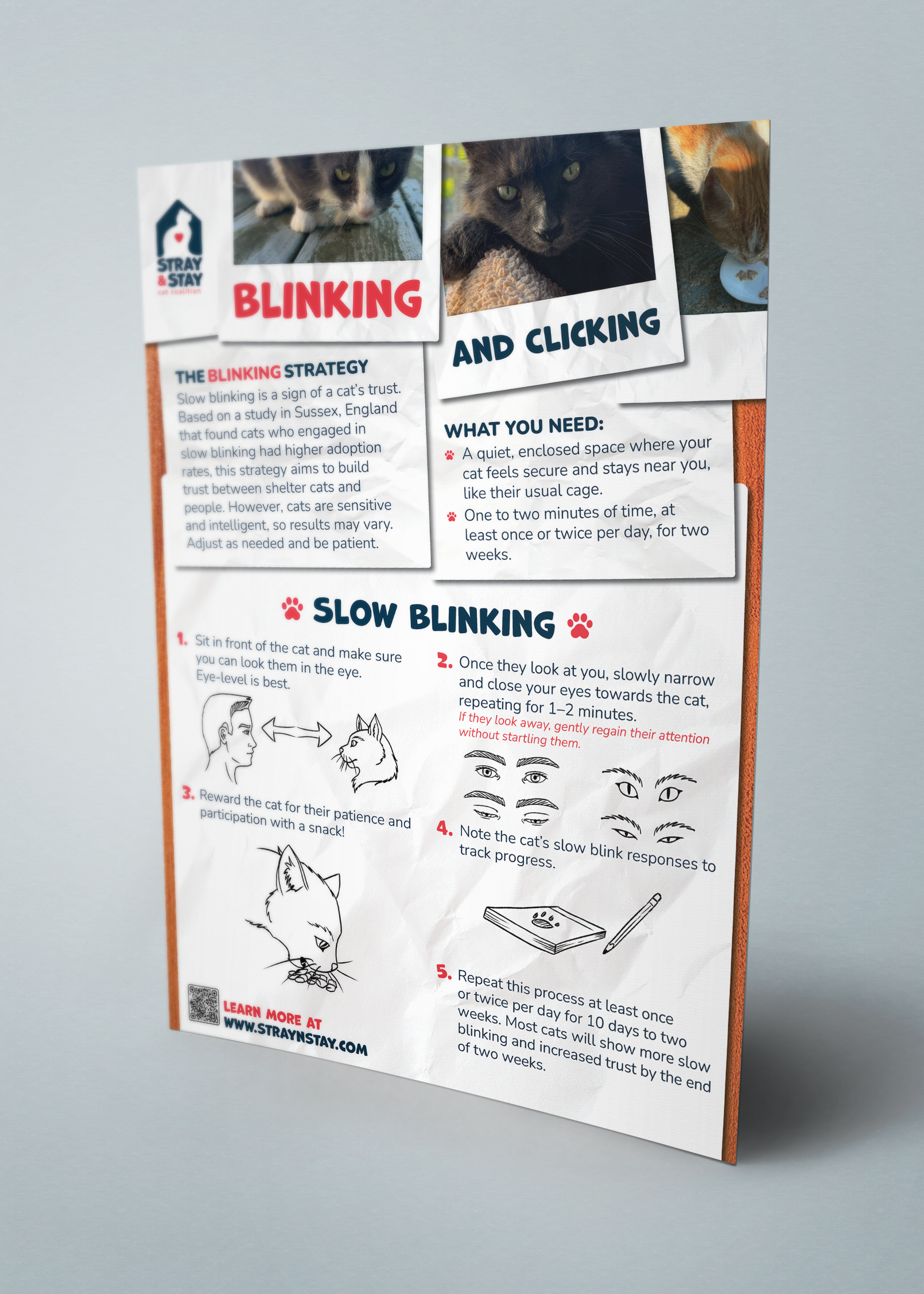

THE PROBLEM
The influx of cats into municipal animal shelters significantly surpasses adoption rates, leading to overcrowding, resource strain, and ultimately, the euthanasia of millions of cats across the United States every year.
This thesis explores the root causes of shelter cat overpopulation by examining both ends of the adoption process: from entry to adoption, or in the worst-case scenario, euthanasia. The primary goal of this thesis is to educate animal shelter staff, volunteers, and cat advocates on the reasons behind shelter cat overcrowding and to encourage additional action regarding what can be done to address the issue.
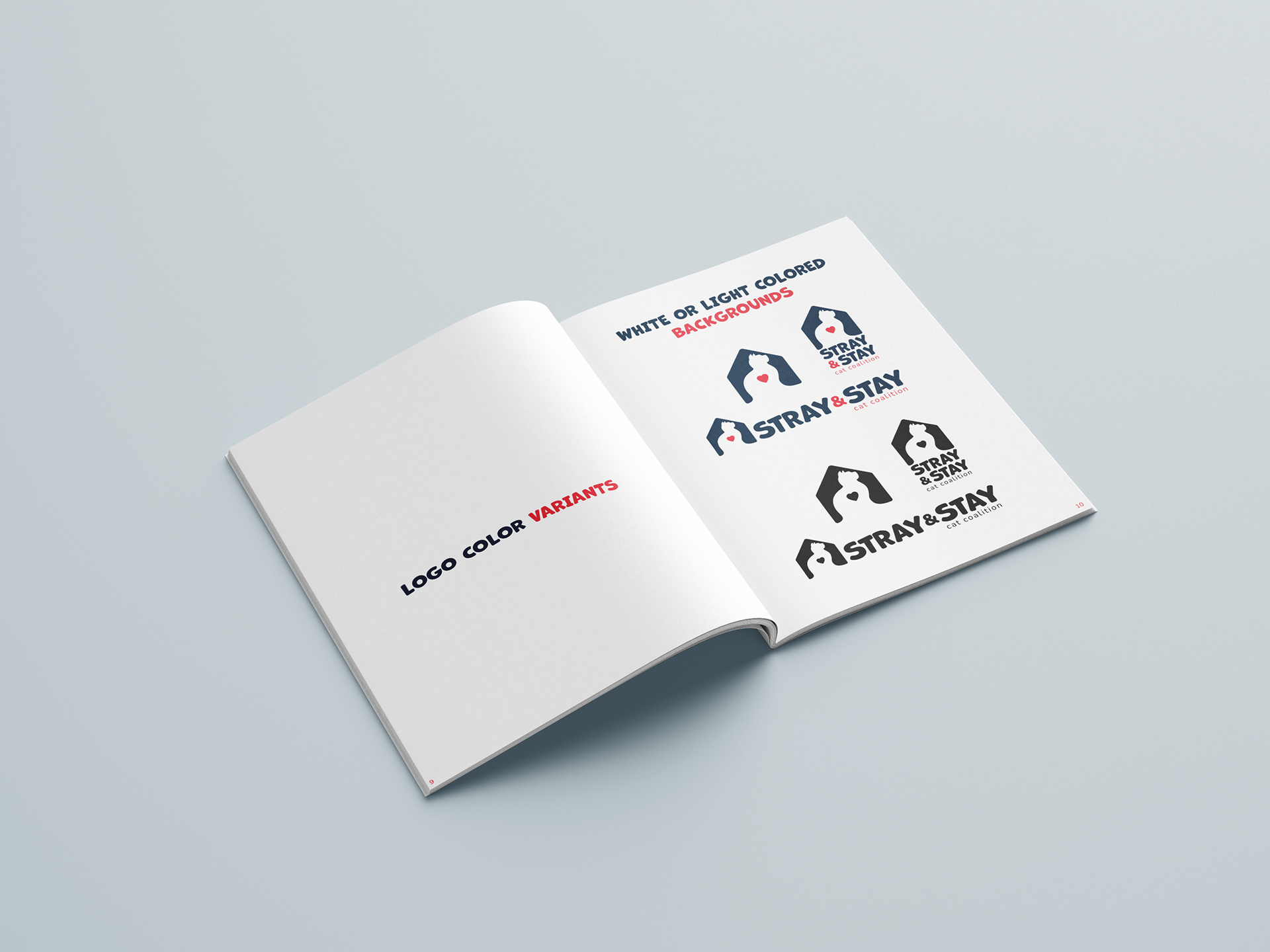
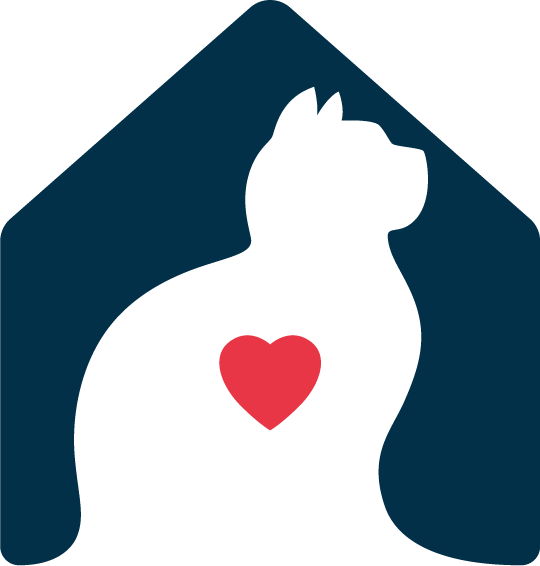


THE RESEARCH
A great deal of research was conducted into both ends of the shelter cat process, from intake to adoptions.
Shelter Cat Intake
On the intake side of the shelter cat process, most entering shelters are community cats, a term used to refer to either domestic cats allowed to wander outdoors, or unowned feral cats who live and survive on their own. Most feral cats have not been spayed, neutered, or vaccinated, making them the primary source of kittens born on the streets and the largest contributor to shelter cat intake.
Trap-Neuter-Return, or TNR, is the leading humane strategy used today to control community cat populations, as it aims to lower reproduction rates and gradually decrease population numbers over time. The TNR process follows three key steps: First, community cats are humanely trapped. Second, they are spayed or neutered and then vaccinated against rabies and other diseases. And third, cats are then returned to their outdoor homes, healthier and no longer able to reproduce. By preventing new litters from being born and improving their health, TNR humanely curbs community cat populations, which ultimately reduces shelter intake.
Shelter Cat Adoptions
On the other side of the equation are those cats in shelters waiting for a good home. However, there are many factors that influence a cat's adoptability.
Adoption rates are influenced by several factors: age (older cats may take up to 6 times longer to adopt than kittens), coat color (dark-colored cats are often overlooked), breed (exotic breeds like Maine Coons or Siamese are adopted up to 64% faster than common mixes), and personality (friendly, outgoing cats are favored over shy or aggressive ones). Studies also suggest ties to gender and age, with male cats typically more social and older cats more cautious than kittens.

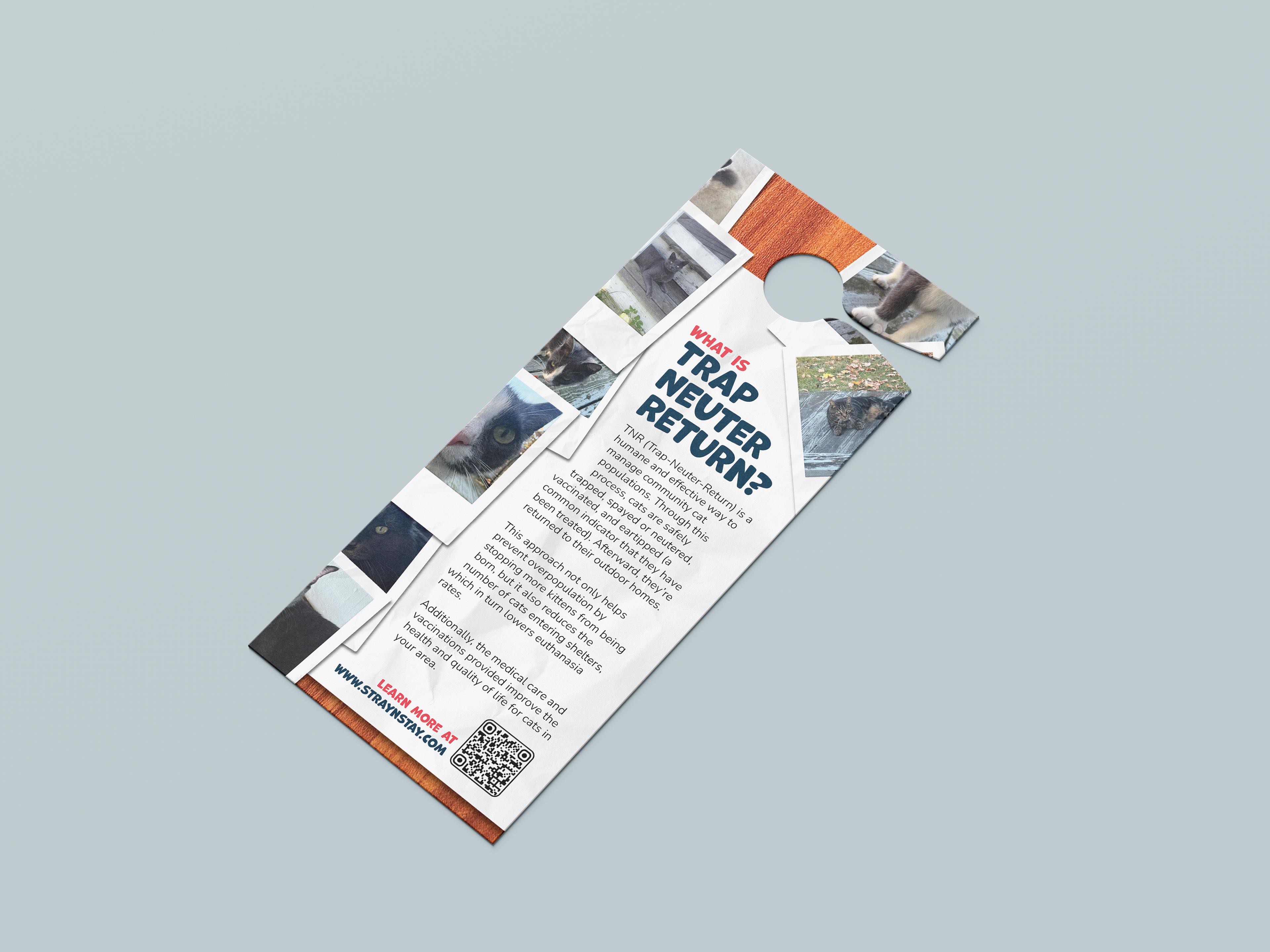
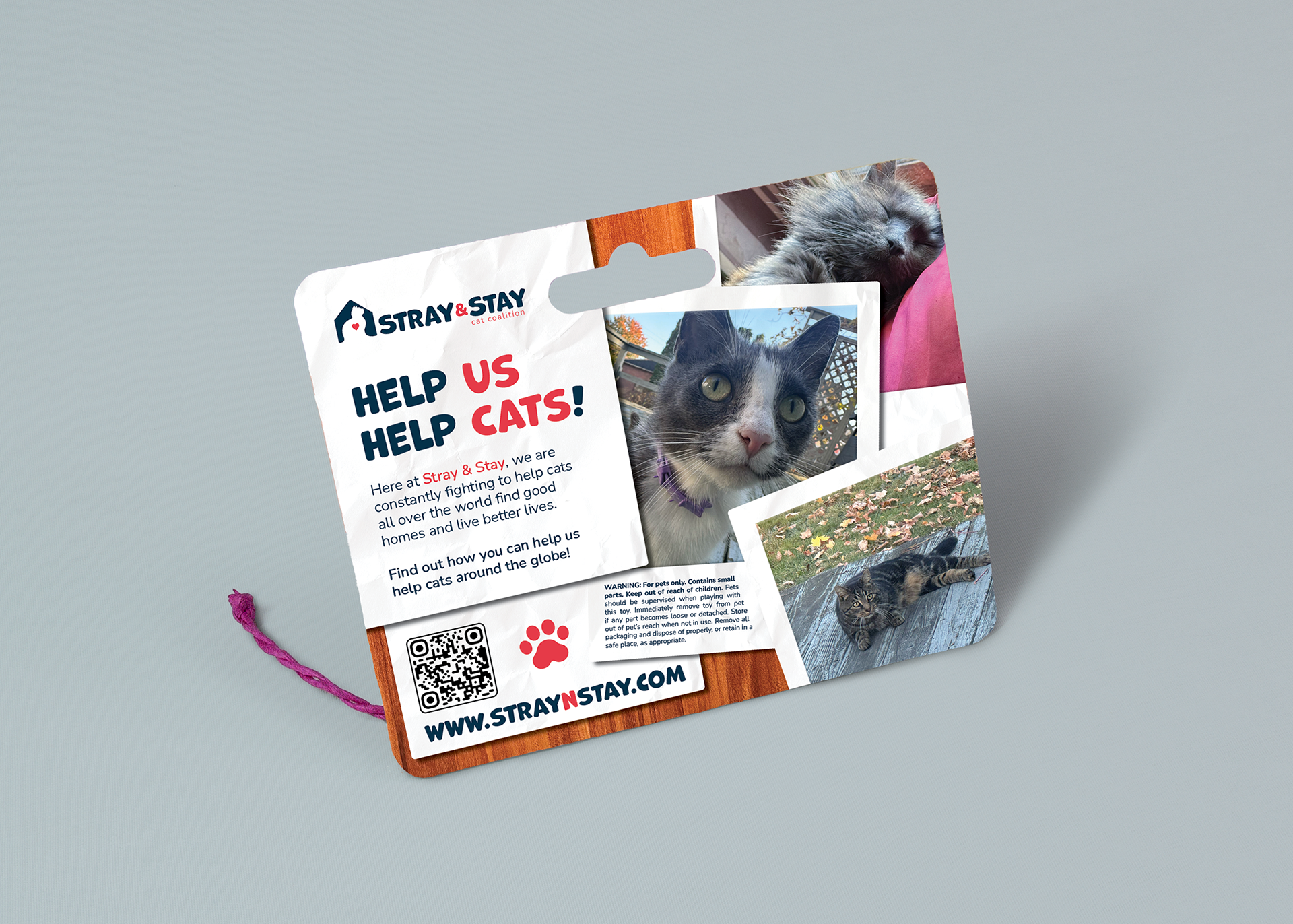
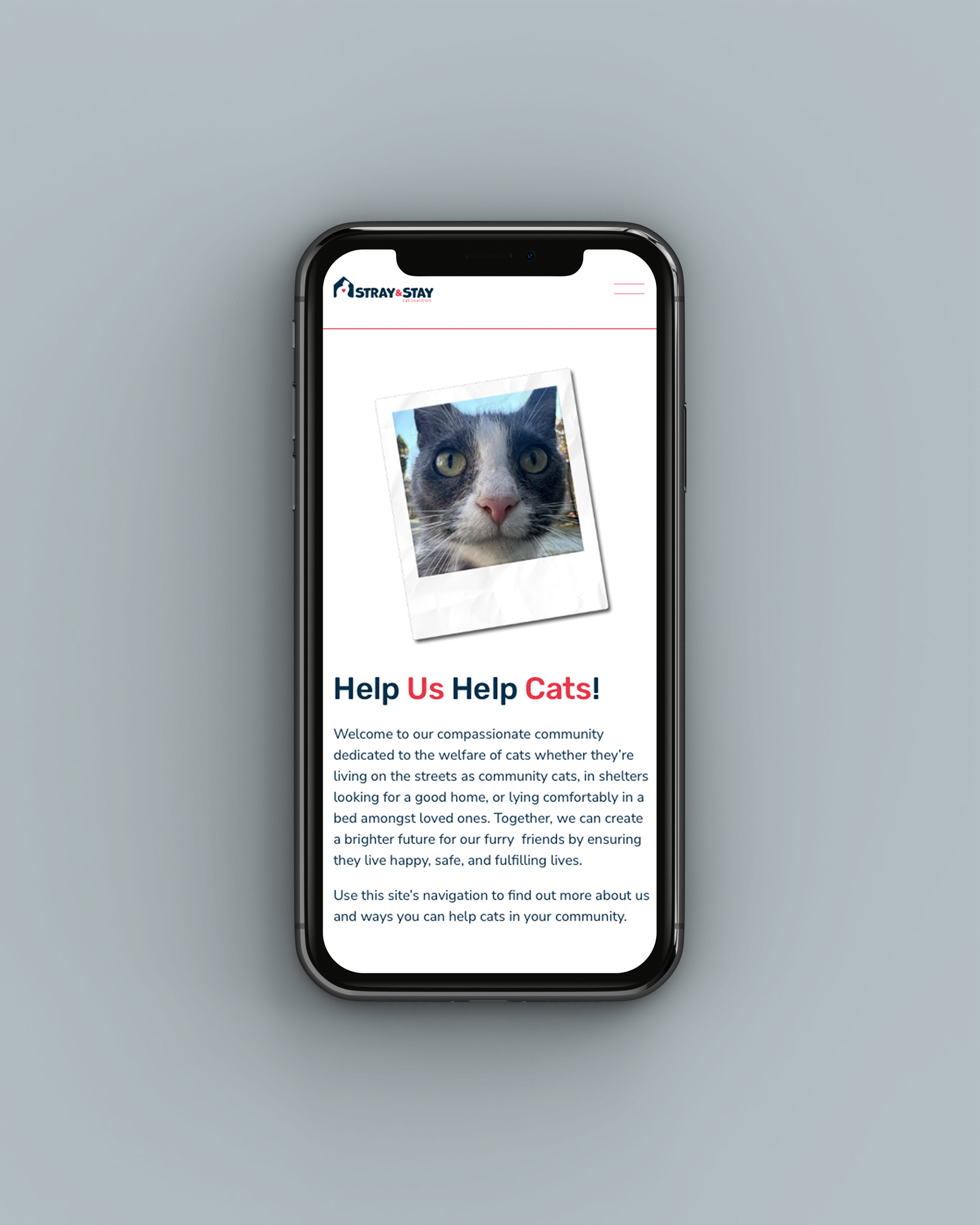
THE VISUAL SOLUTION
Through research, it became clear that design could play a key role in supporting animal welfare professionals. This project delivers clear, purposeful materials for shelter staff, volunteers, vets, animal control, and cat advocates—offering practical tools to help improve shelter flow and boost adoption rates.
To create something practical and impactful, the Shelter Cat Advocacy Tool Kit was designed as a set of physical materials for use at events, meetings, and in the field. It addresses both intake and adoption challenges through the following components: a TNR Fact Book & Guide, public outreach doorhangers, an adoption risk trifold, behavior strategy posters, and branded gear for humans and cats. Most items include scannable QR codes linking to further resources online. To unify the system, I also developed a hypothetical advocacy brand focused on shelter cat welfare.
What follows are the various components of my final design solution.
Stray & Stay Cat Coalition
This hypothetical brand became the foundation for the Tool Kit, as its name and visual identity influenced the rest of the materials within. The words "Stray" and "stay reflect the brand's care for both community and shelter cats, while "Coalition" emphasizes a united group working together to help those cats.
For the brand’s colors, I decided to balance professionalism and empathy, using black, white, and navy blue to convey its modern sophistication and dependability, while using a rose red to add a sense of warmth, positivity, and compassion.
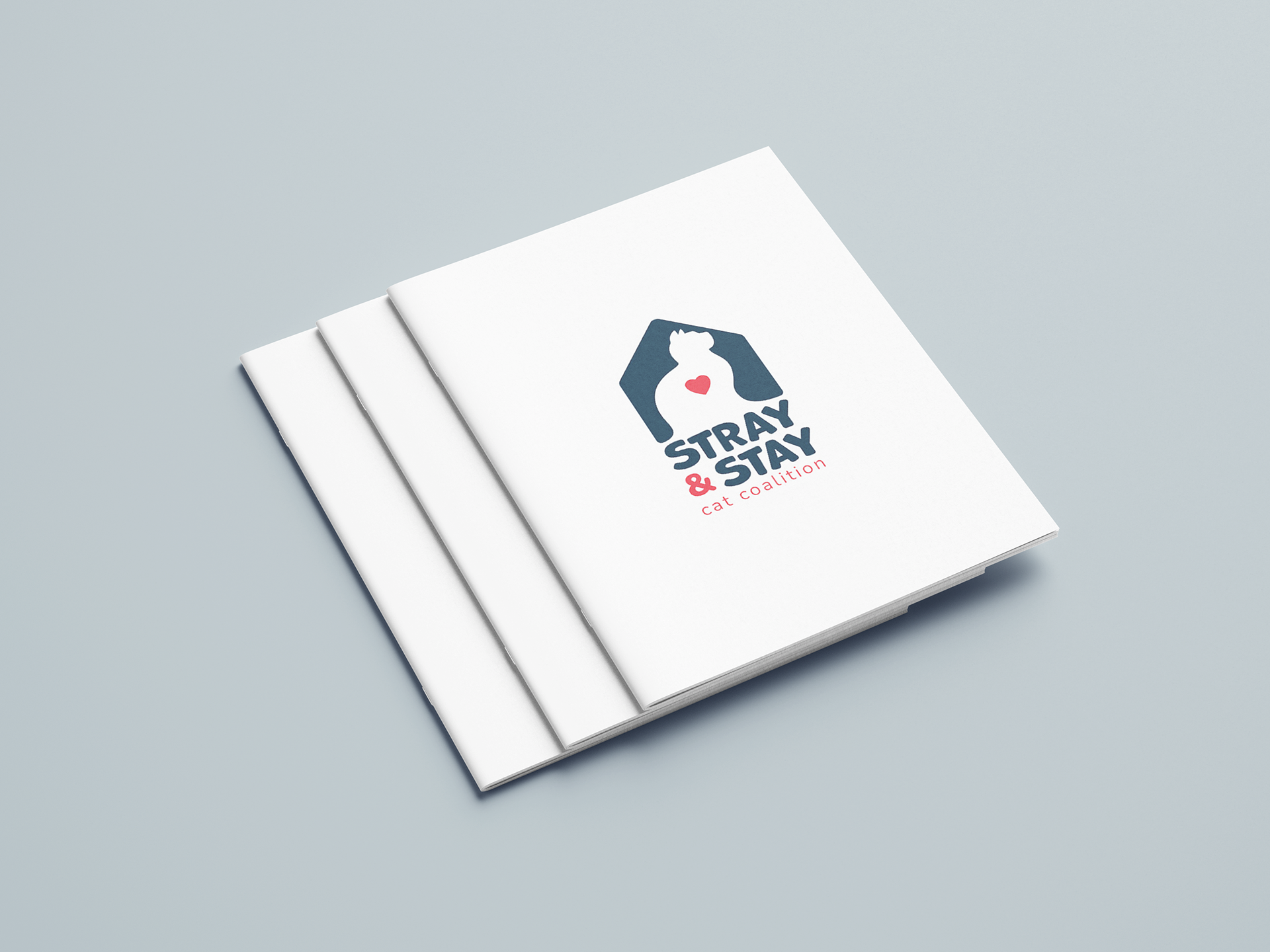
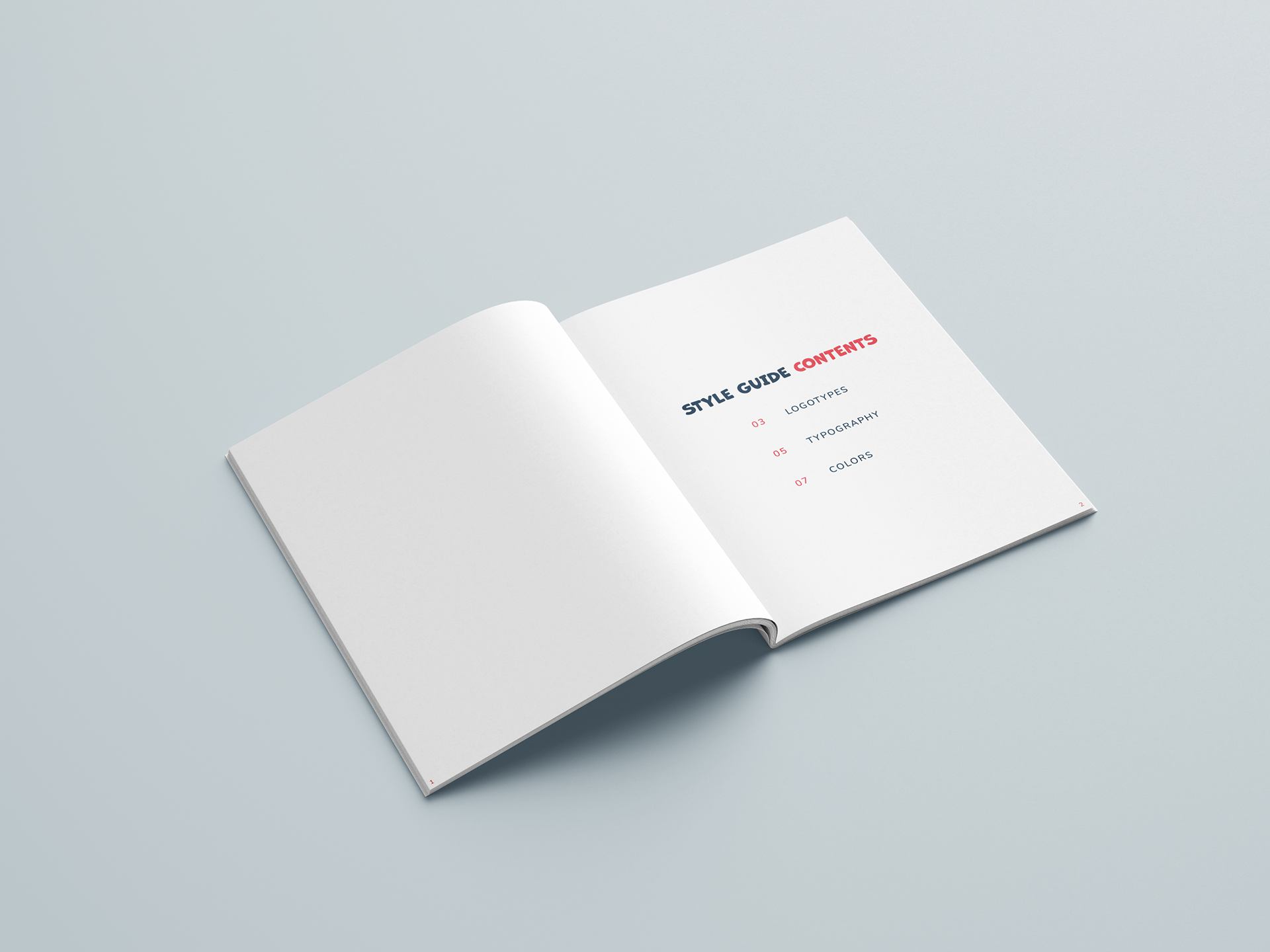
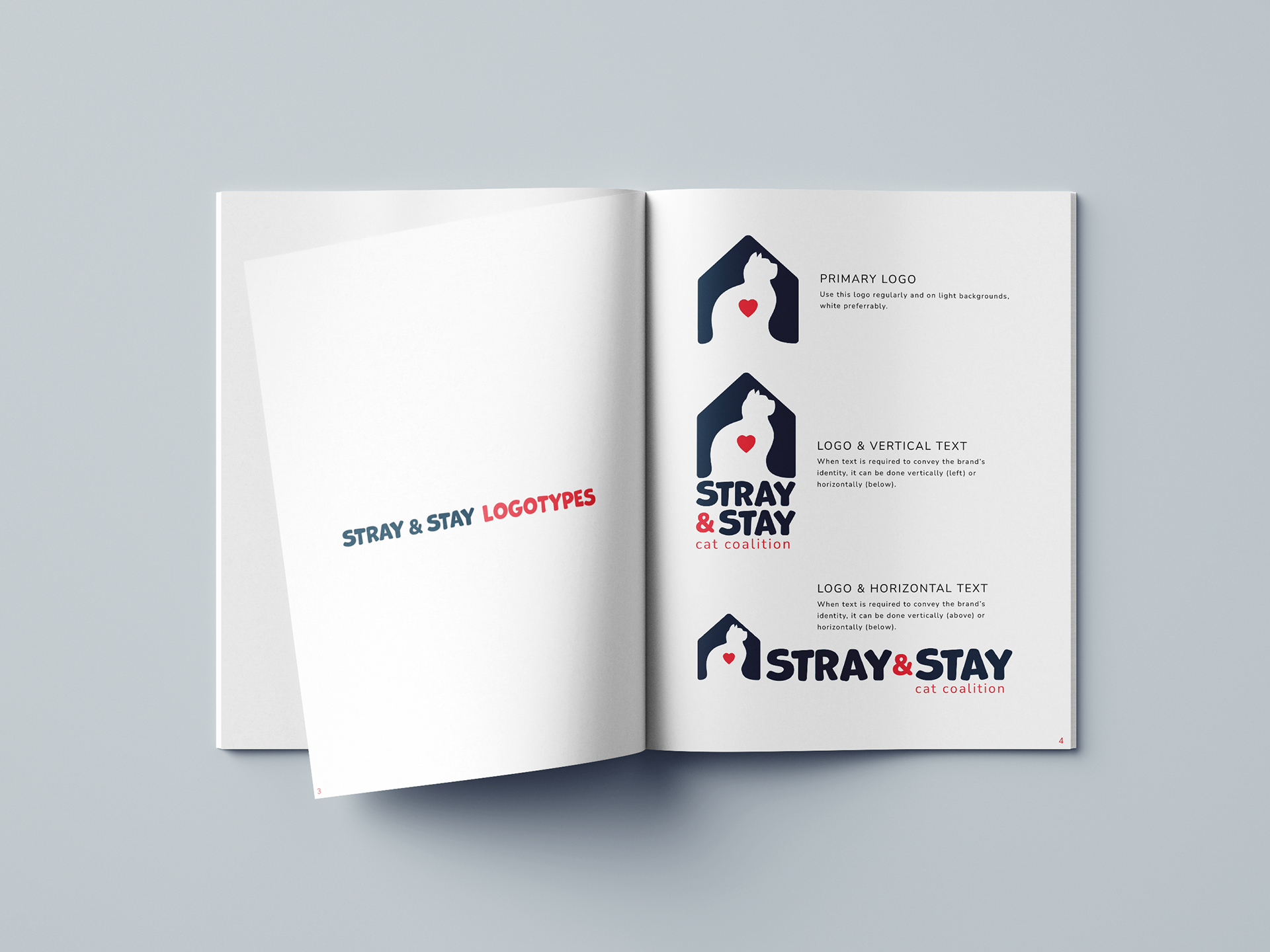

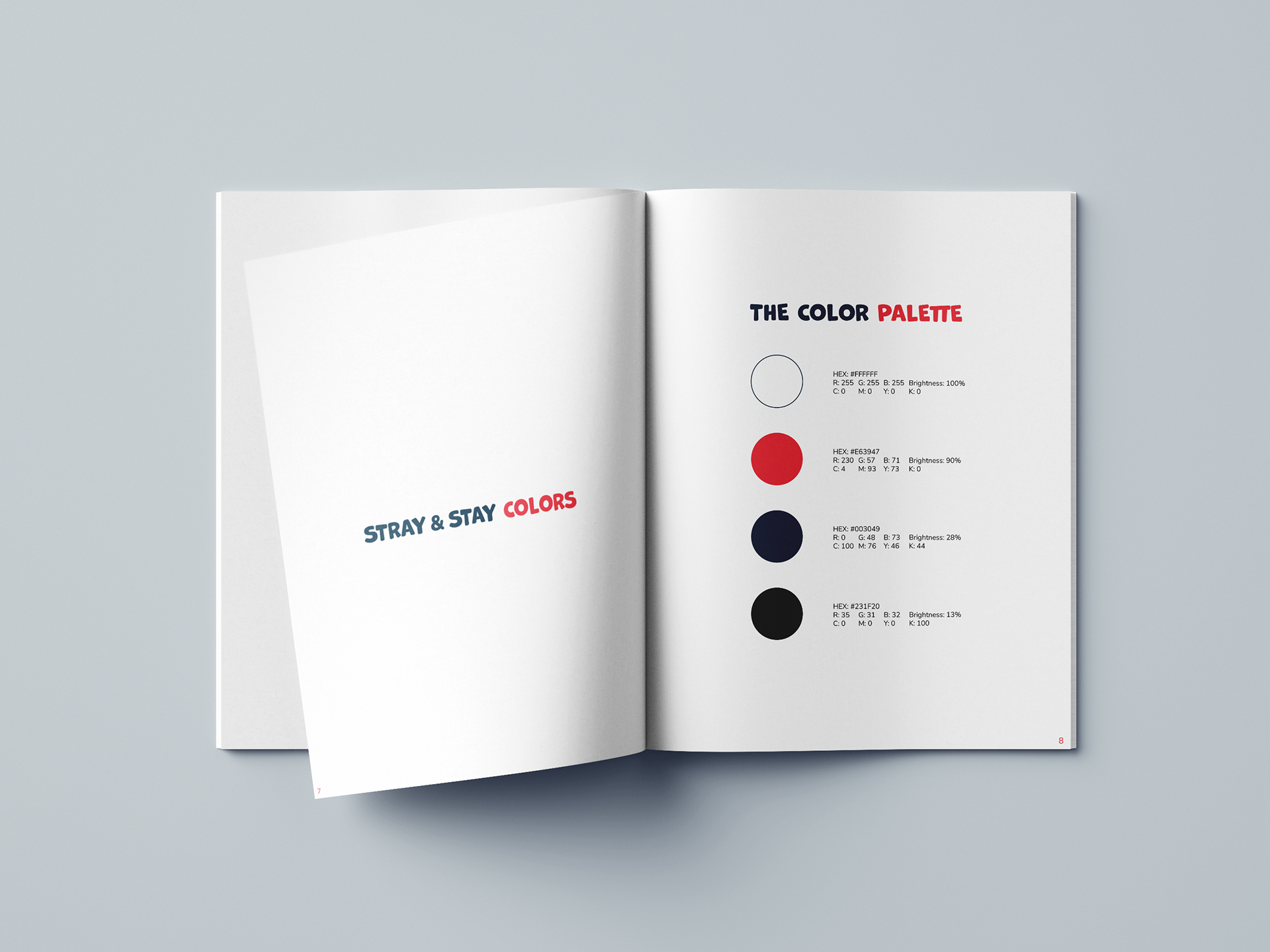
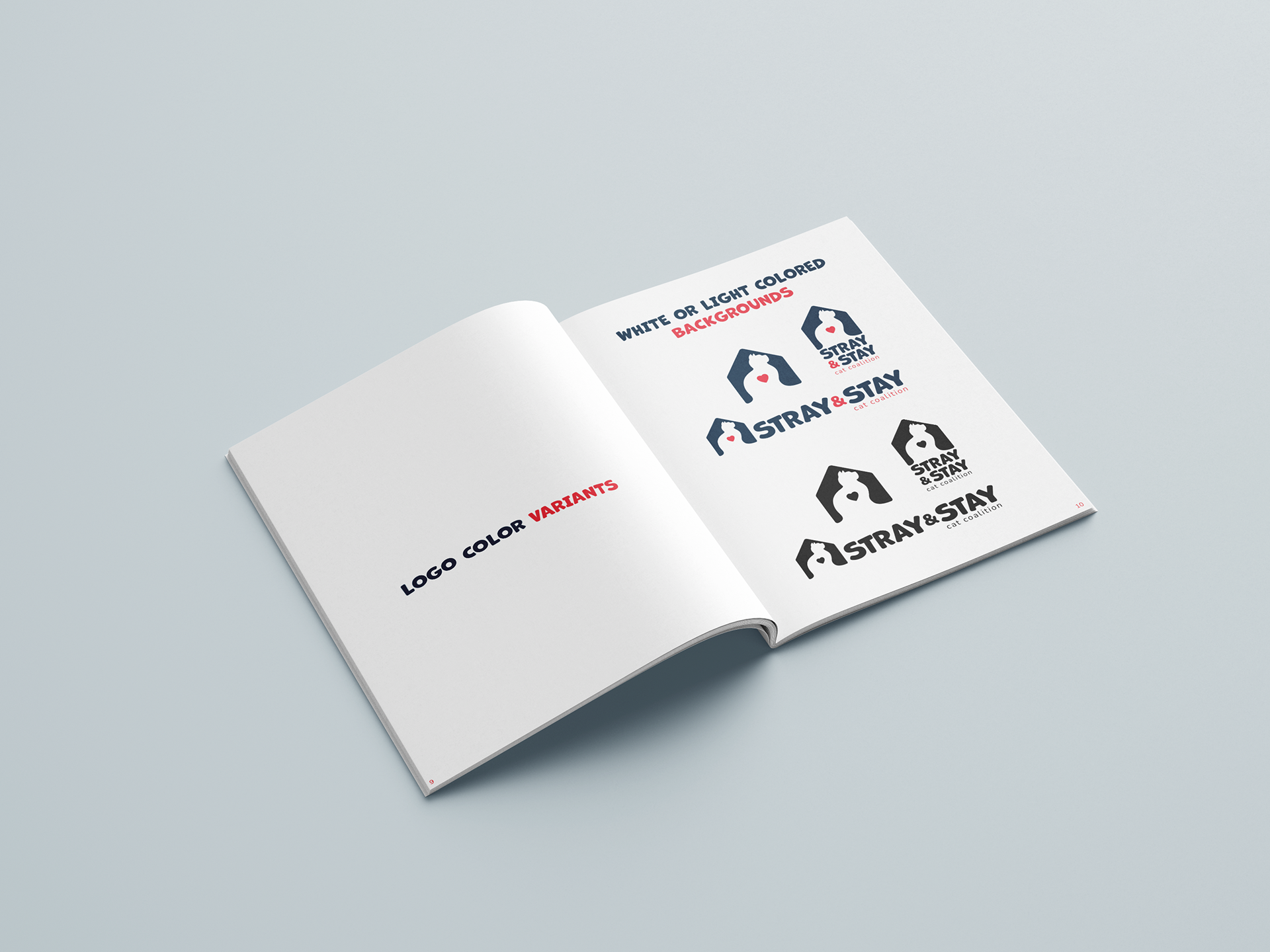
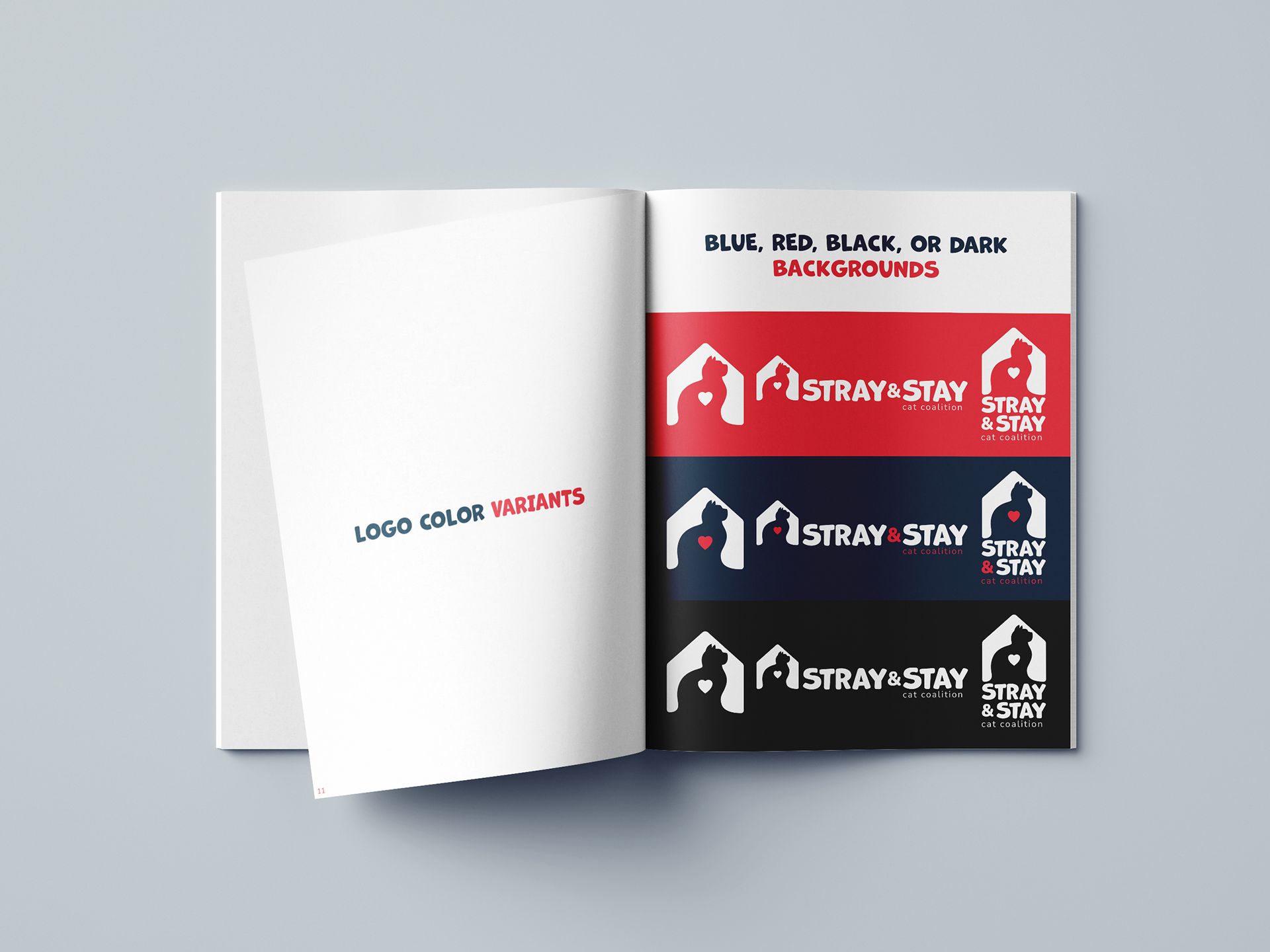
-- -- -- -- -- -- --
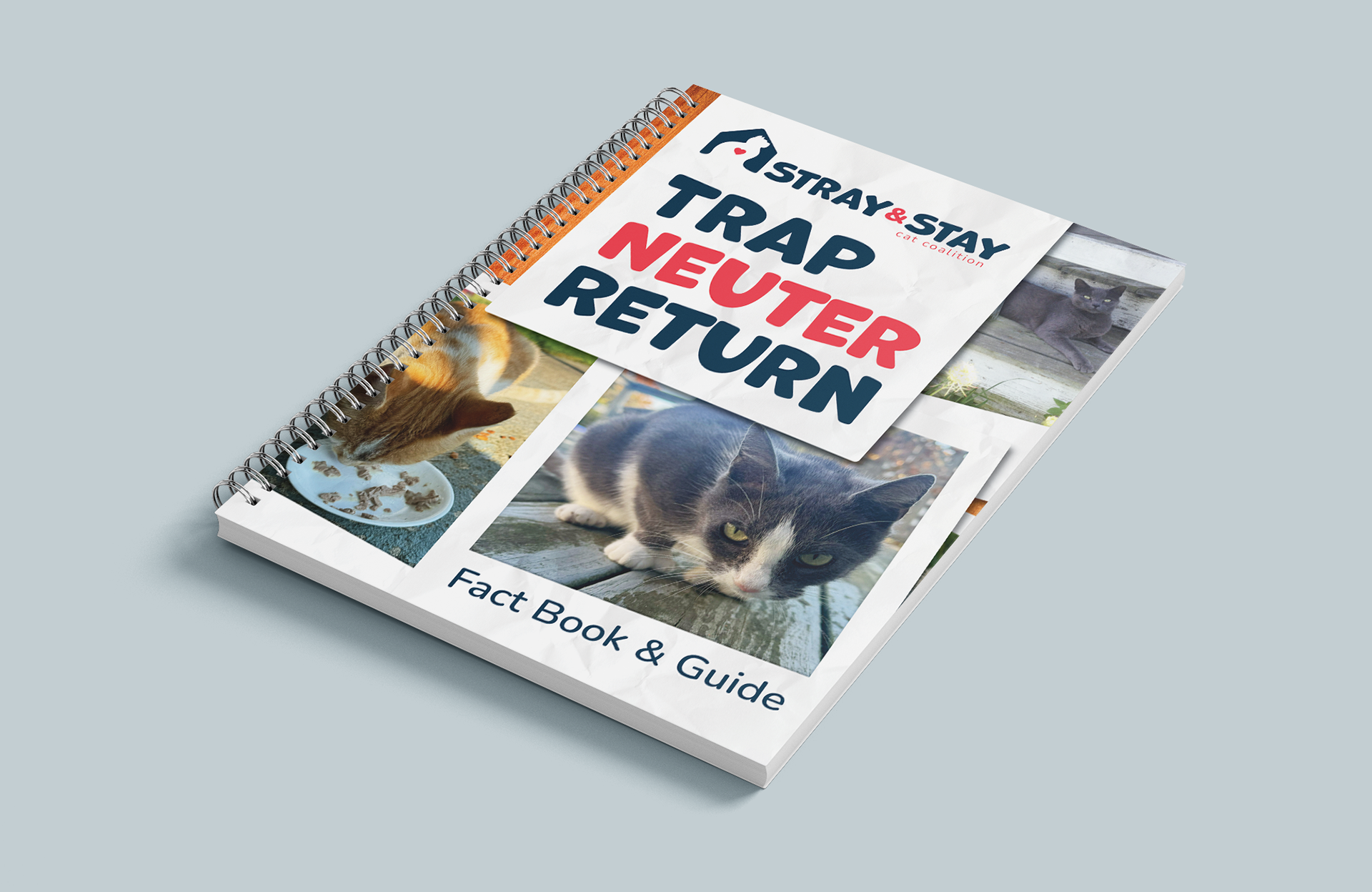
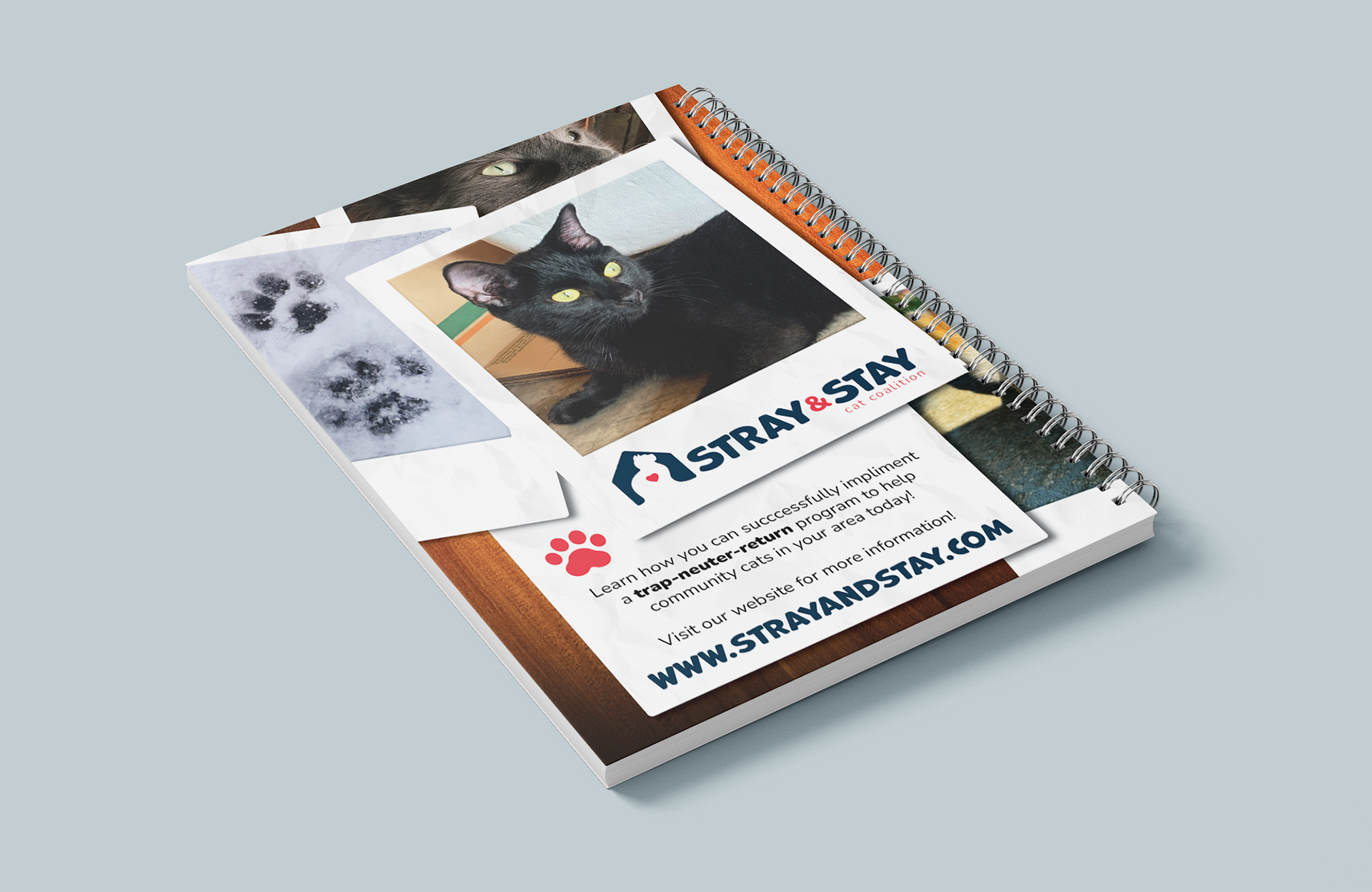
Trap-Neuter-Return Fact Book & Guide
This book introduces Trap-Neuter-Return and how to implement it, addressing the intake side of shelter cat overpopulation. Designed with a nostalgic Polaroid aesthetic, it uses emotional storytelling, color, and visual hierarchy to engage readers.
The cover evokes the feeling of flipping through cherished memories, a theme that continues throughout the Tool Kit. Inside, the book outlines each stage of TNR—from preparation and trapping to neutering and returning—paired with tips and a QR code linking to additional resources. It closes with encouragement and a call to explore further materials online.
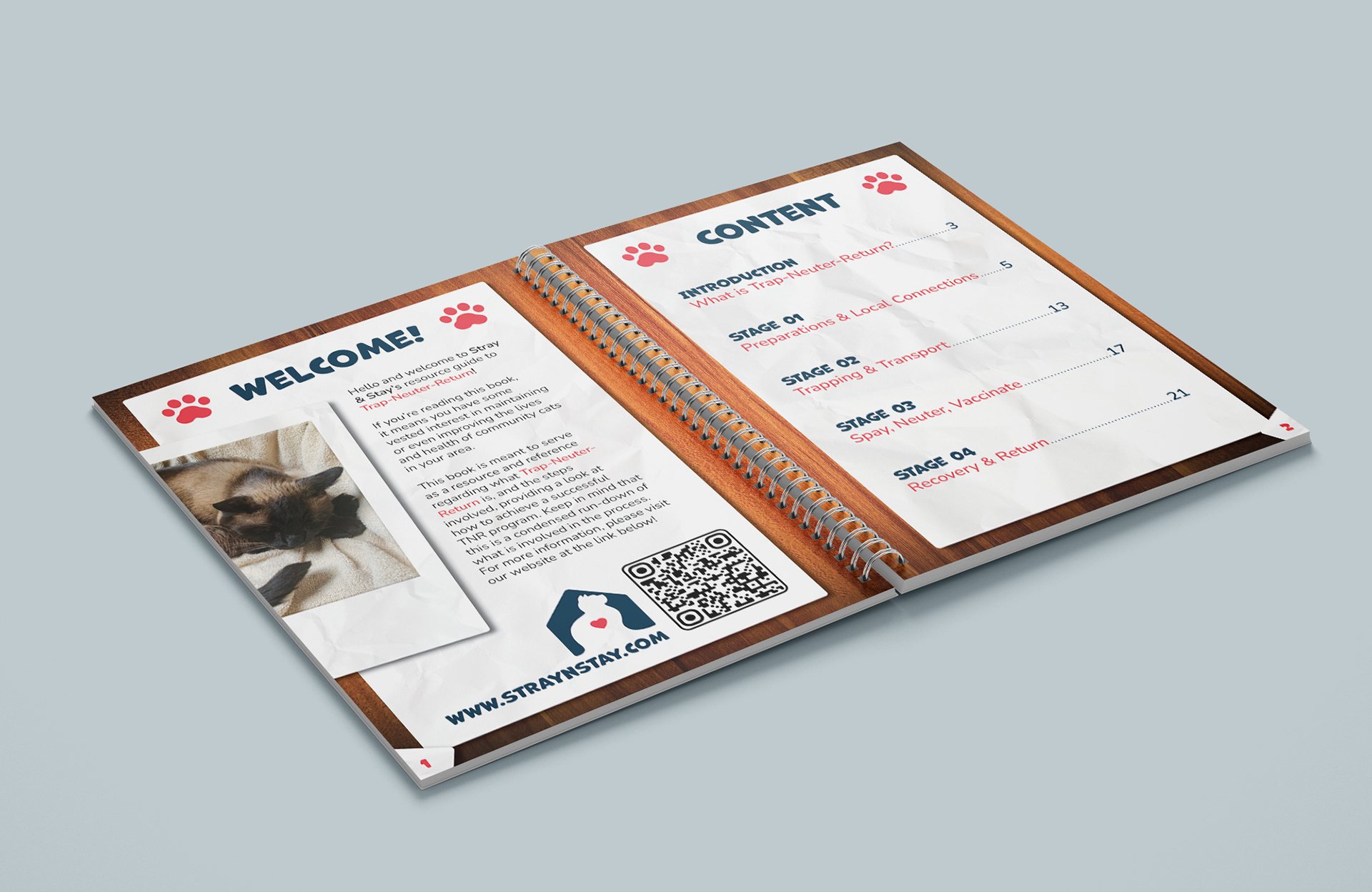
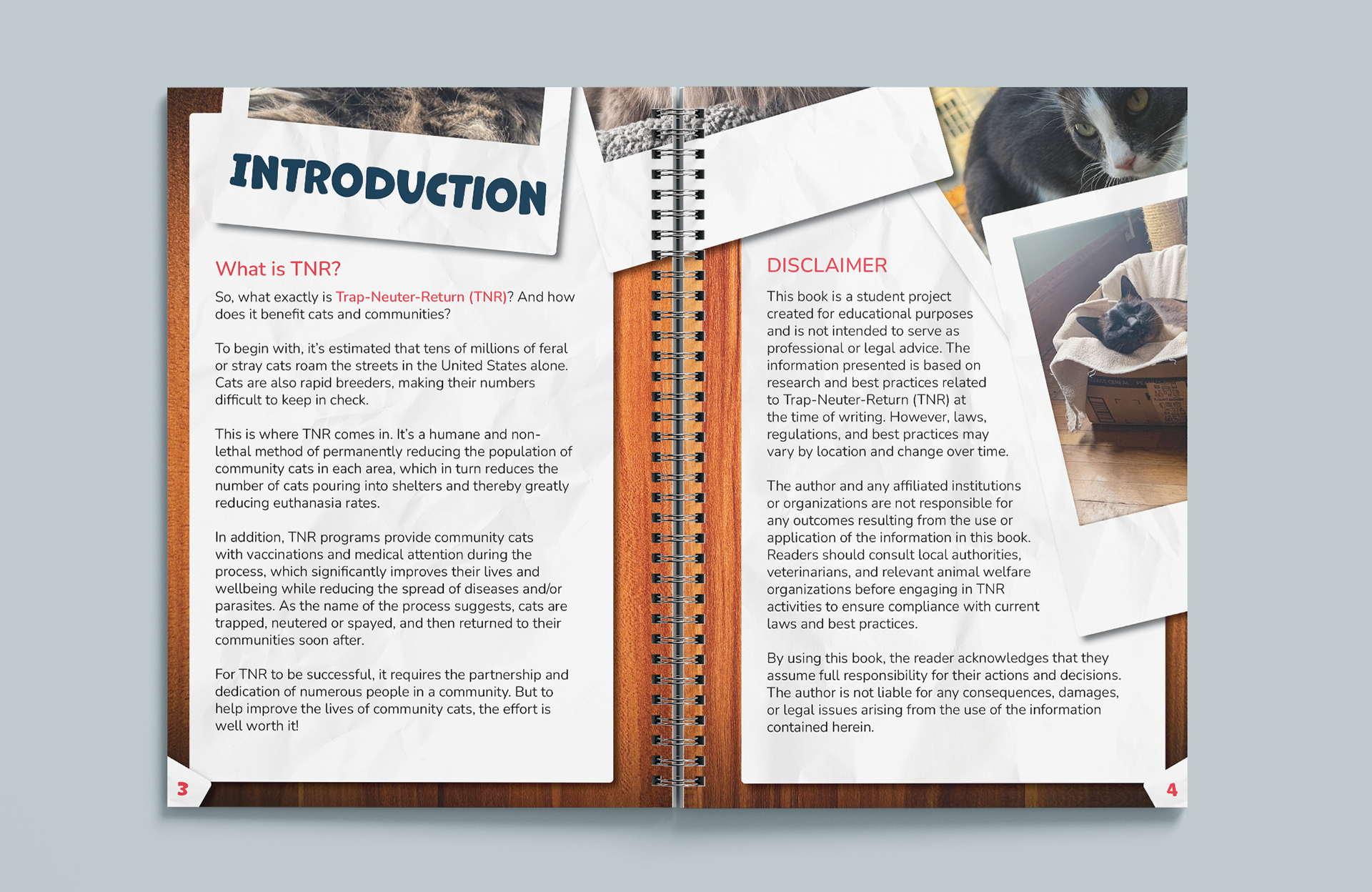
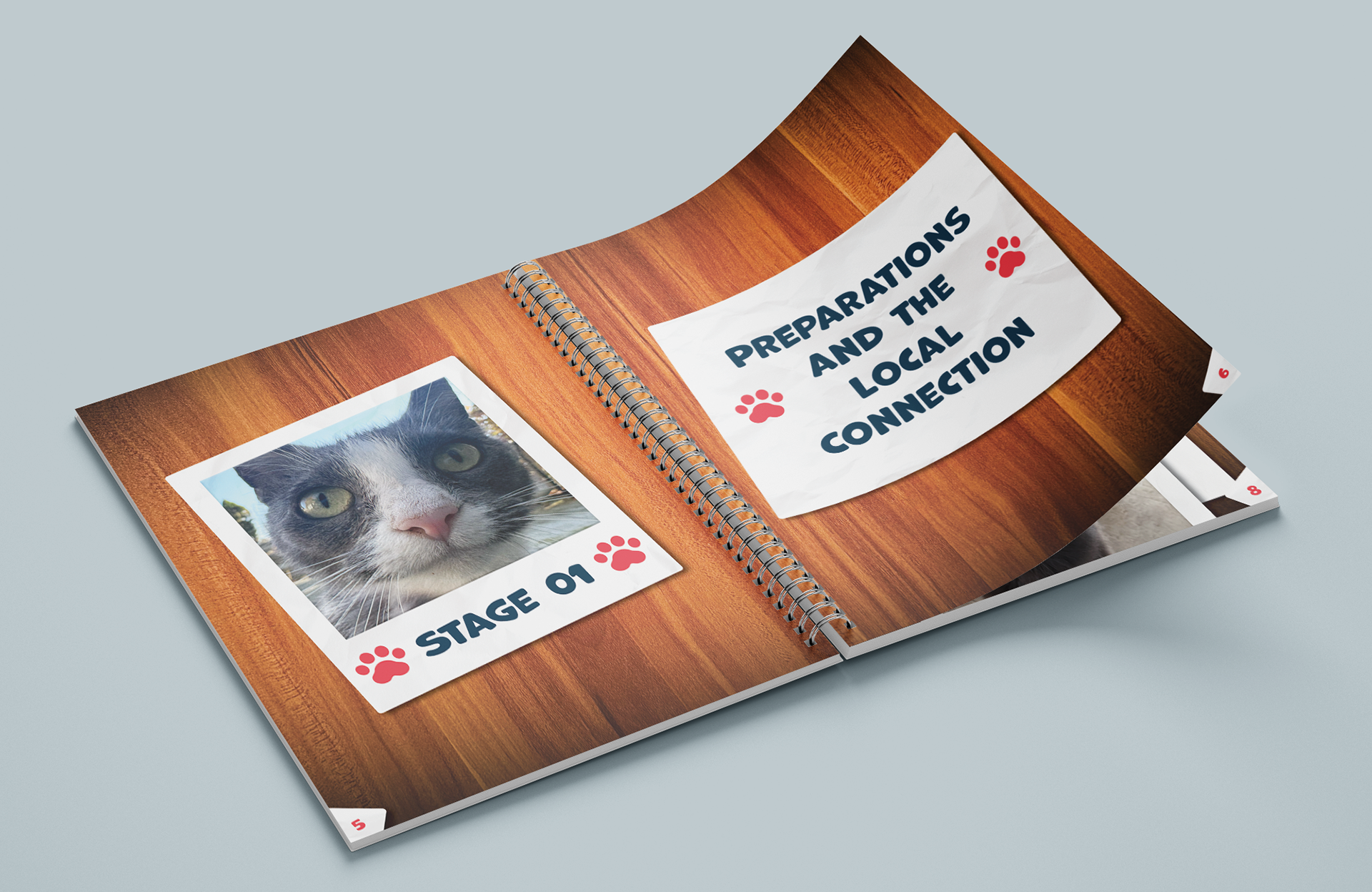

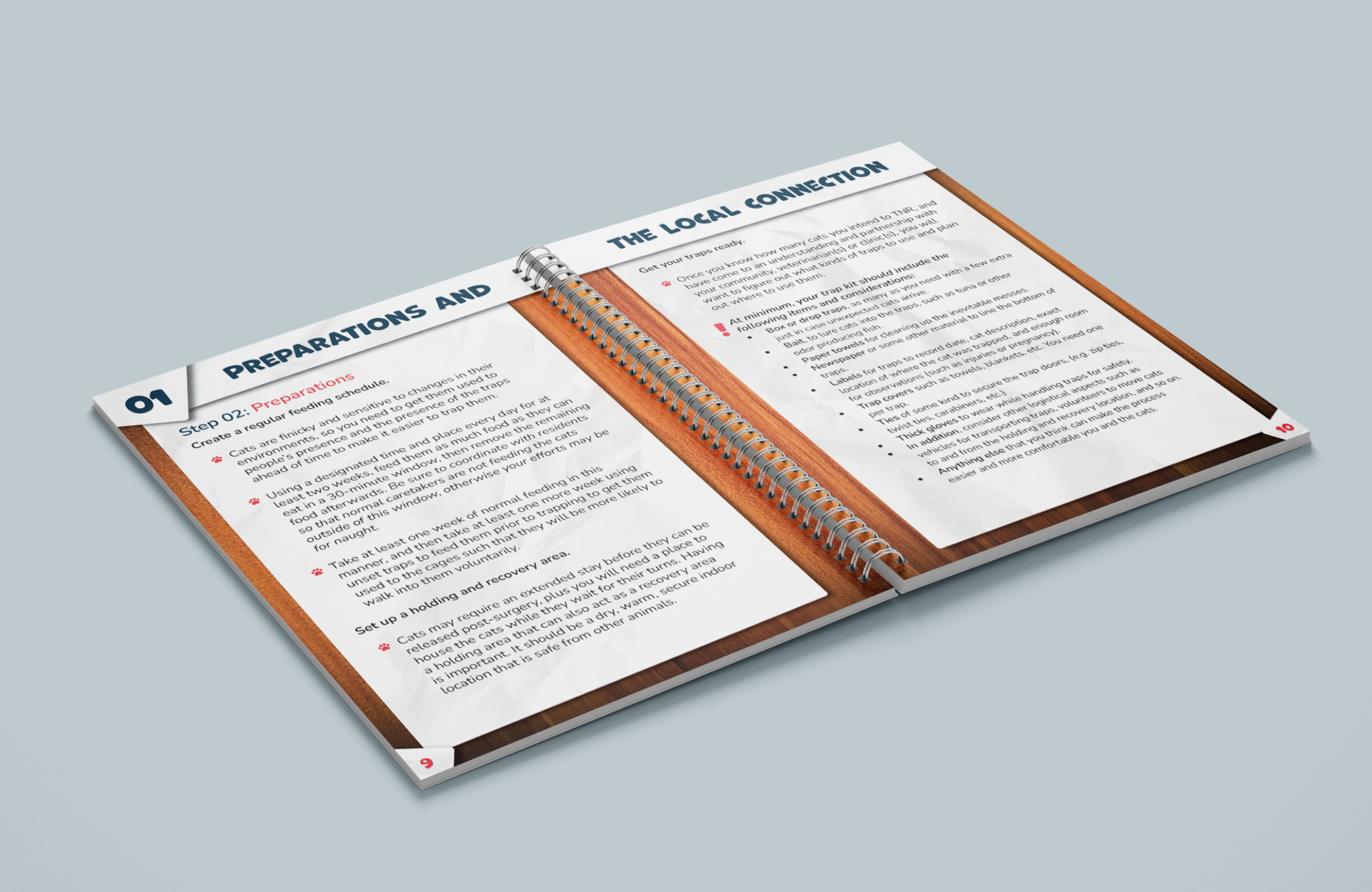

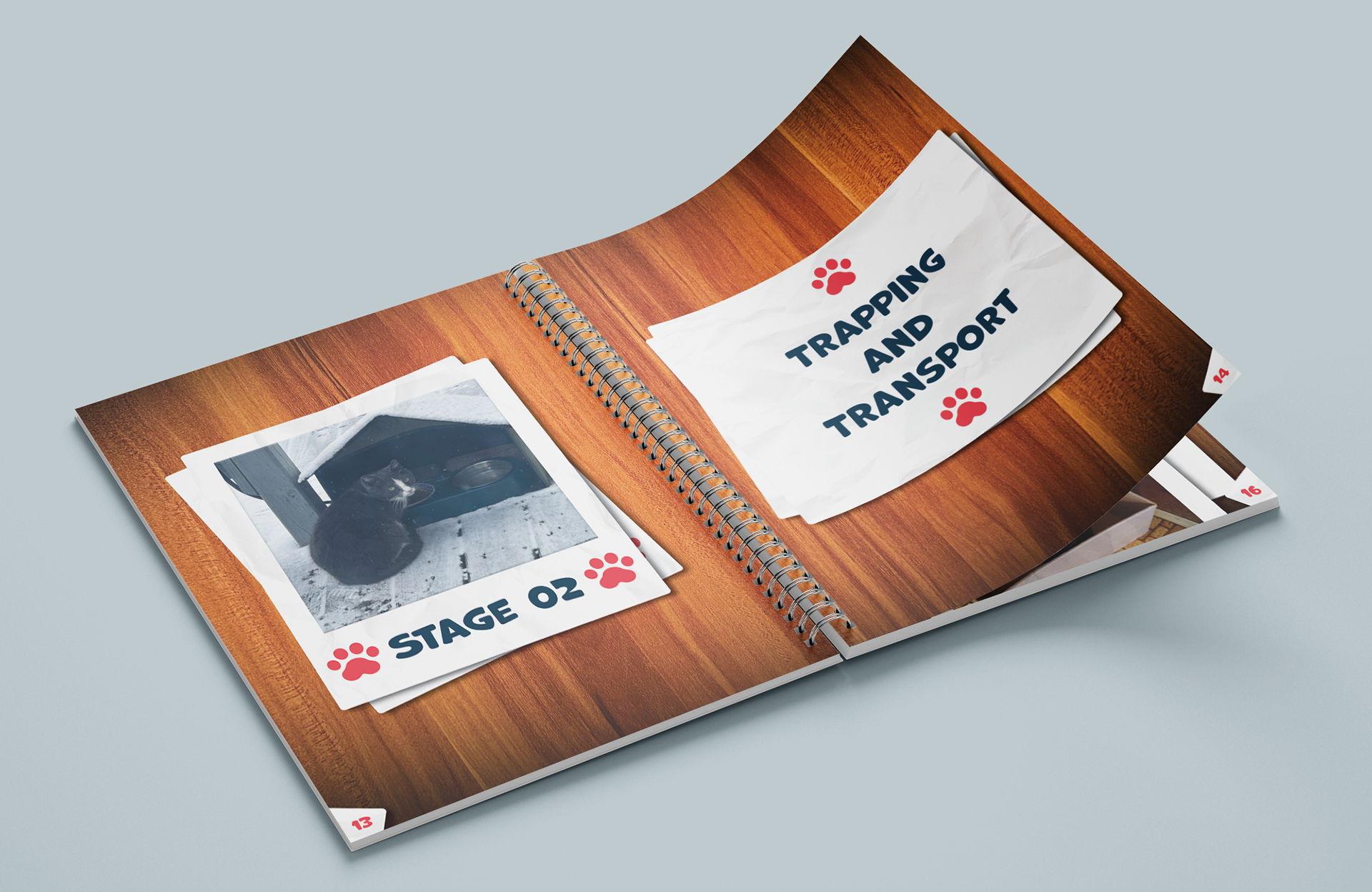
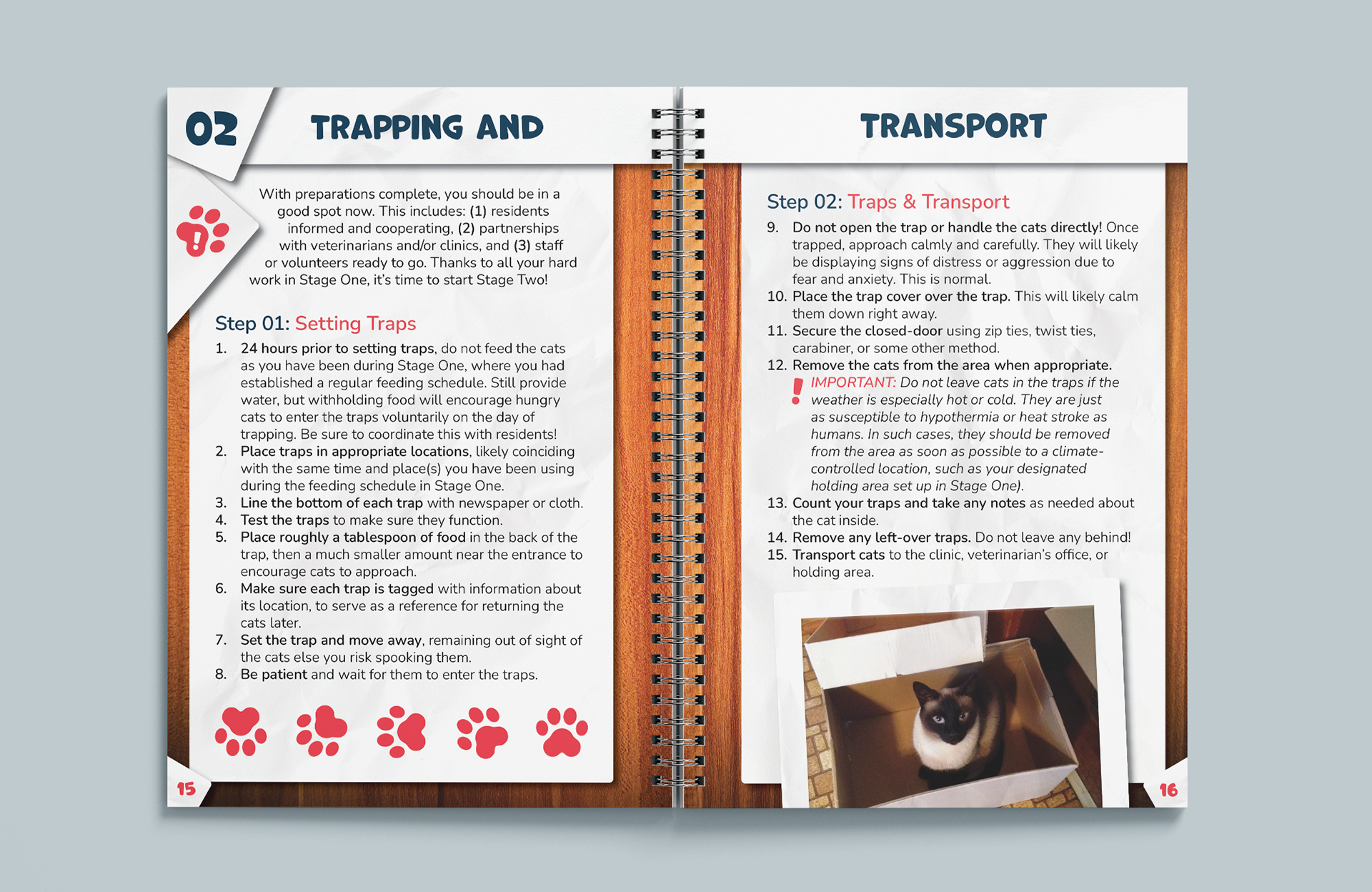
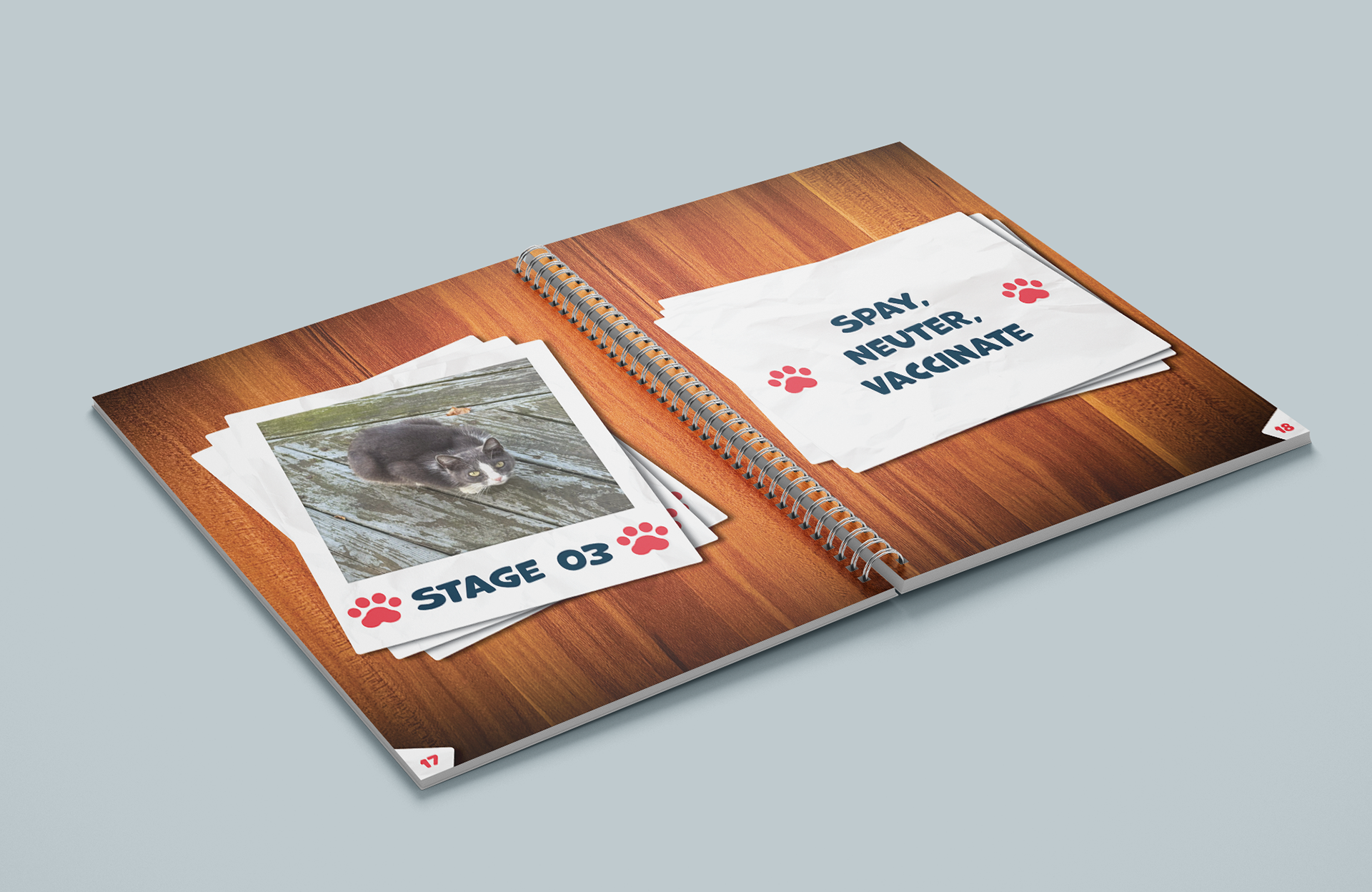

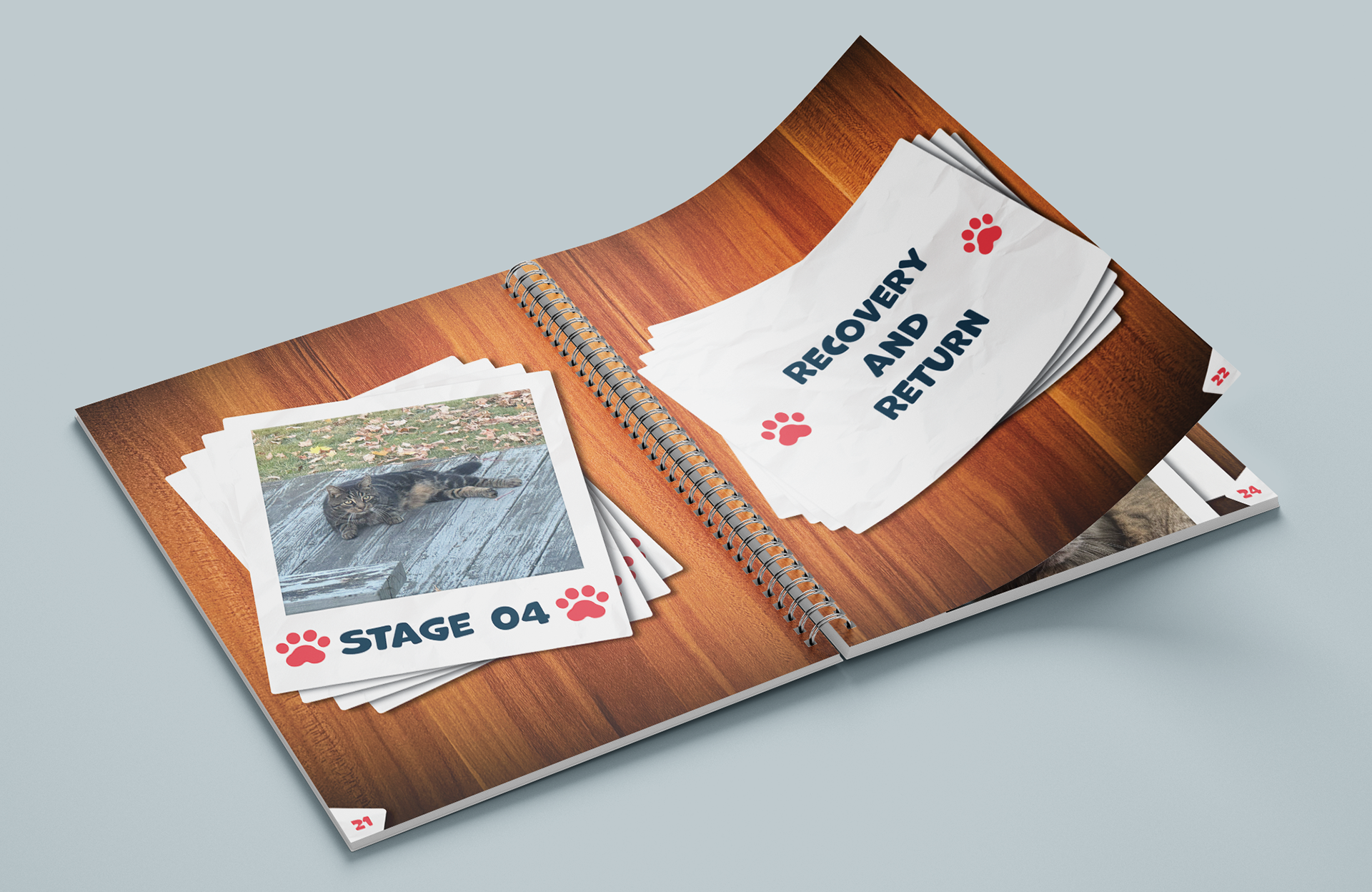
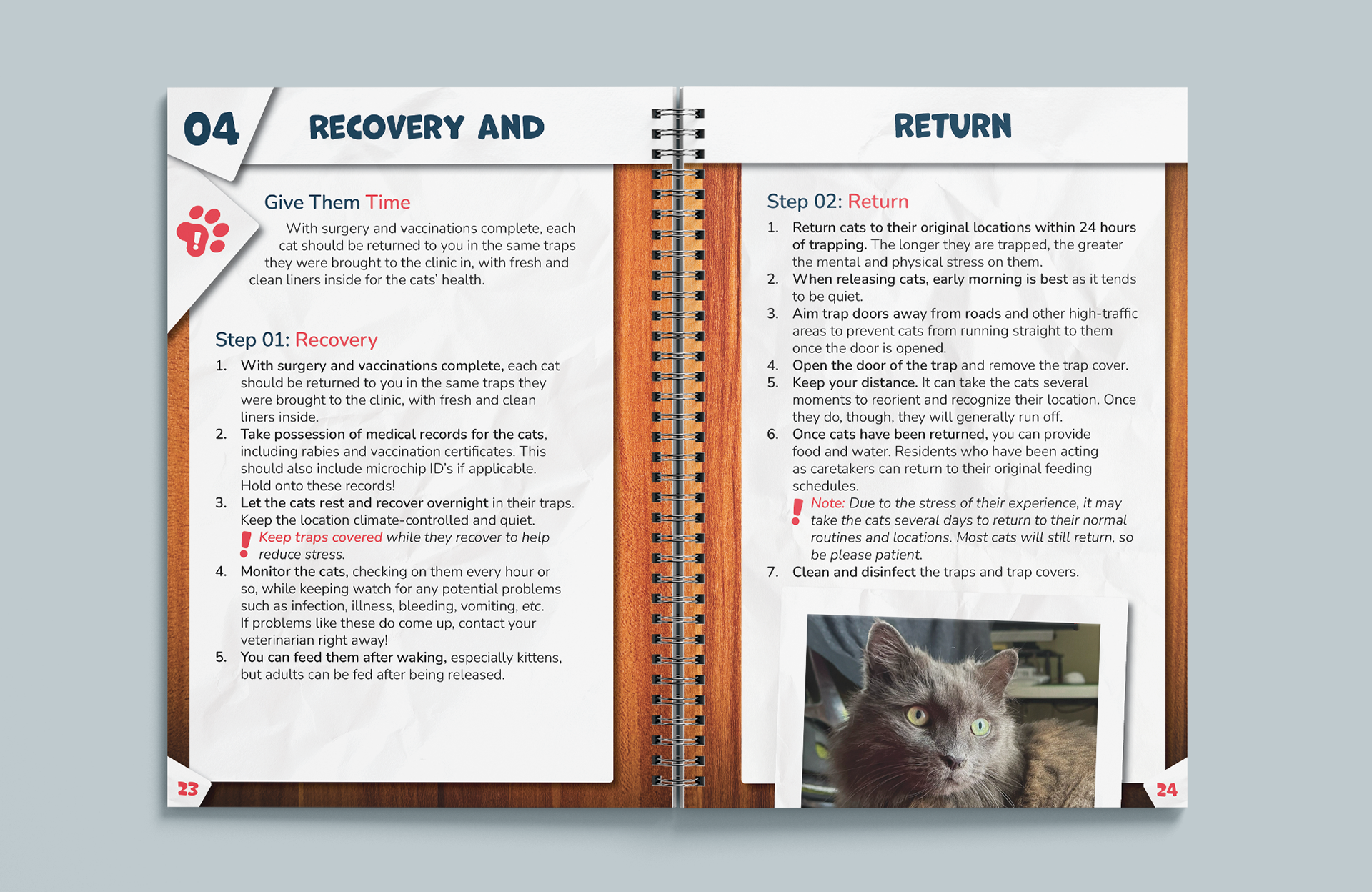
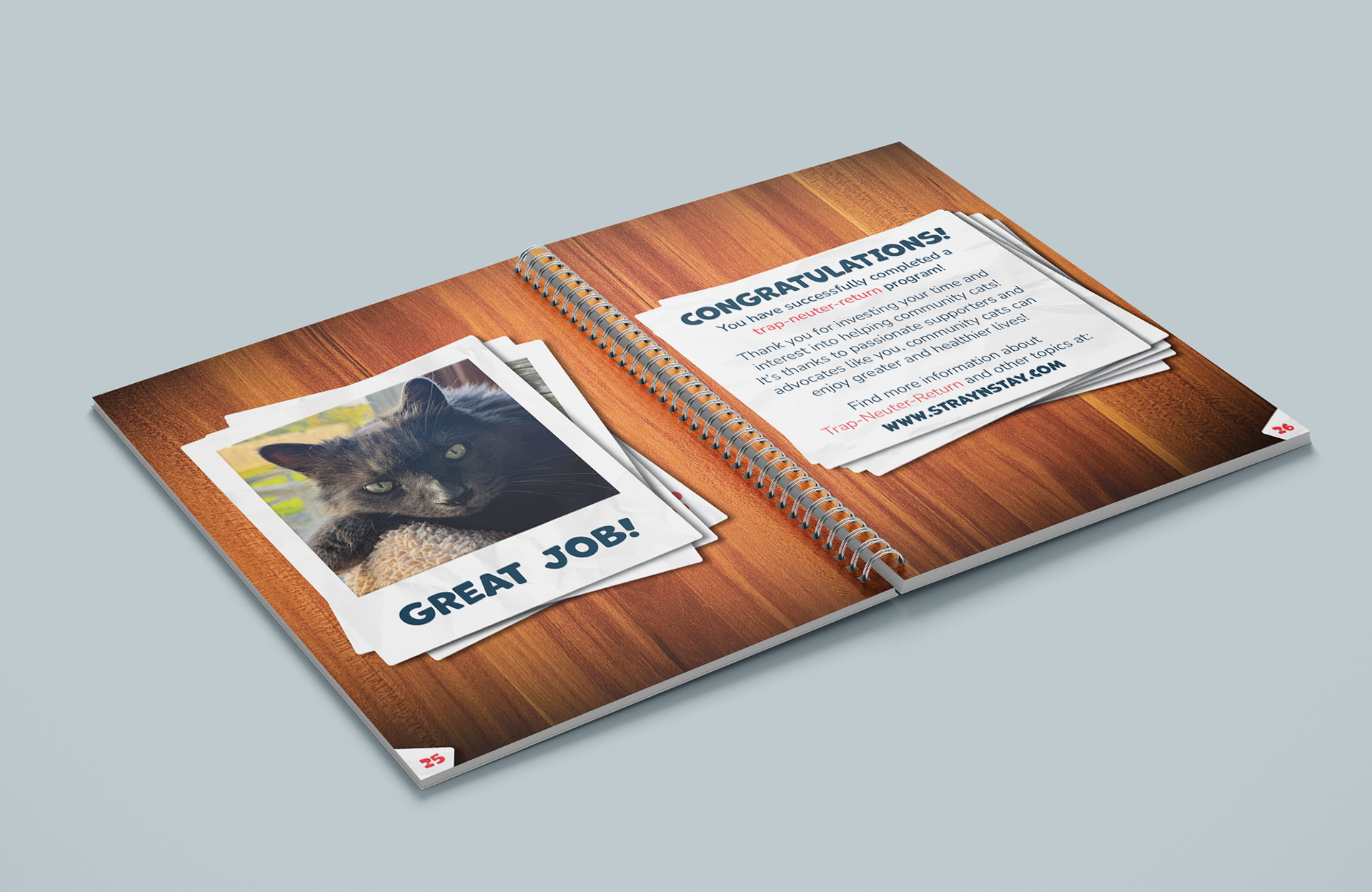
-- -- -- -- -- -- --
TNR Doorhangers
The next item in the Tool Kit is the double-sided TNR Doorhanger, which is designed to help shelters inform the community of upcoming TNR events. It explains TNR on the back and includes space on the front for event details and contact information. Much like the TNR Fact Book & Guide, its design follows the same Polaroid theme as the book, with images along the side and text designed to look like notes on the backs of Polaroids.

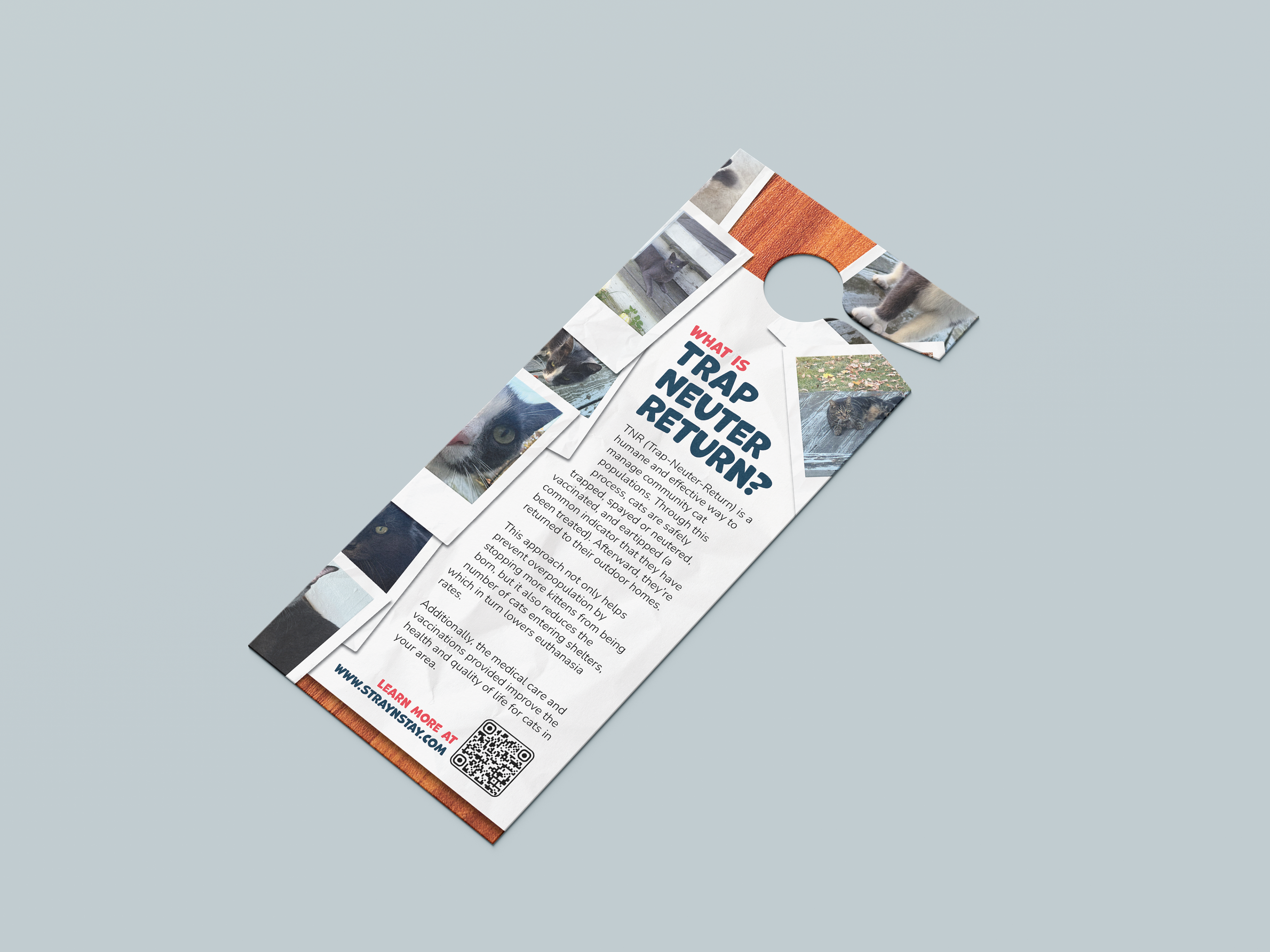
-- -- -- -- -- -- --
Adoption Risks Trifold
On the other side of the shelter cat process, this next item addresses adoption challenges, focusing on cats most at risk of being overlooked—like older, dark-colored, mixed-breed, or unsociable cats. Making further use of the Polaroid aesthetic, the interior panels outline the key risk factors like black cat bias, age, breed, and personality, while the back suggests ways shelters can respond, like using social media, newsletters, and encouraging direct interaction with cats.

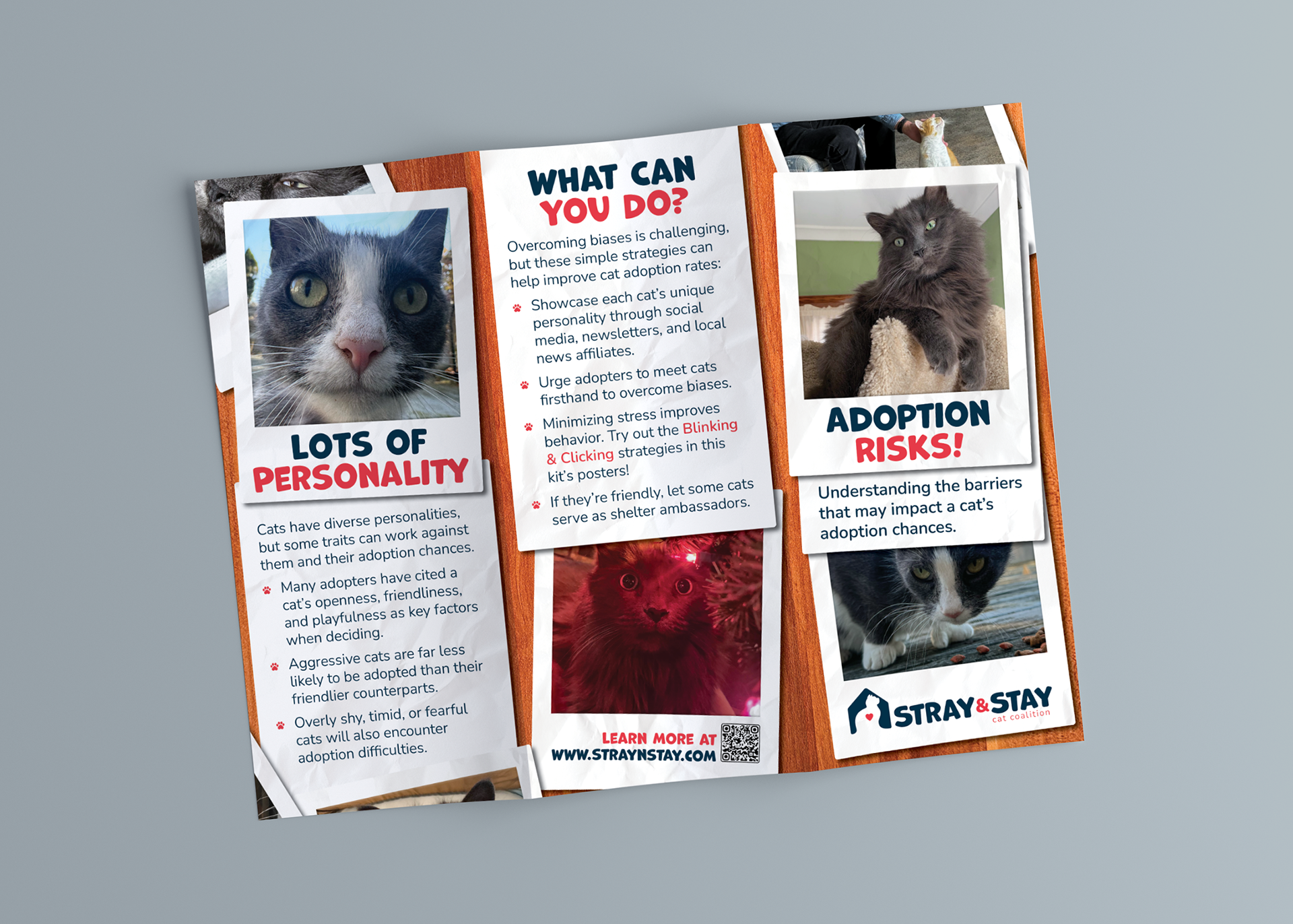
-- -- -- -- -- -- --
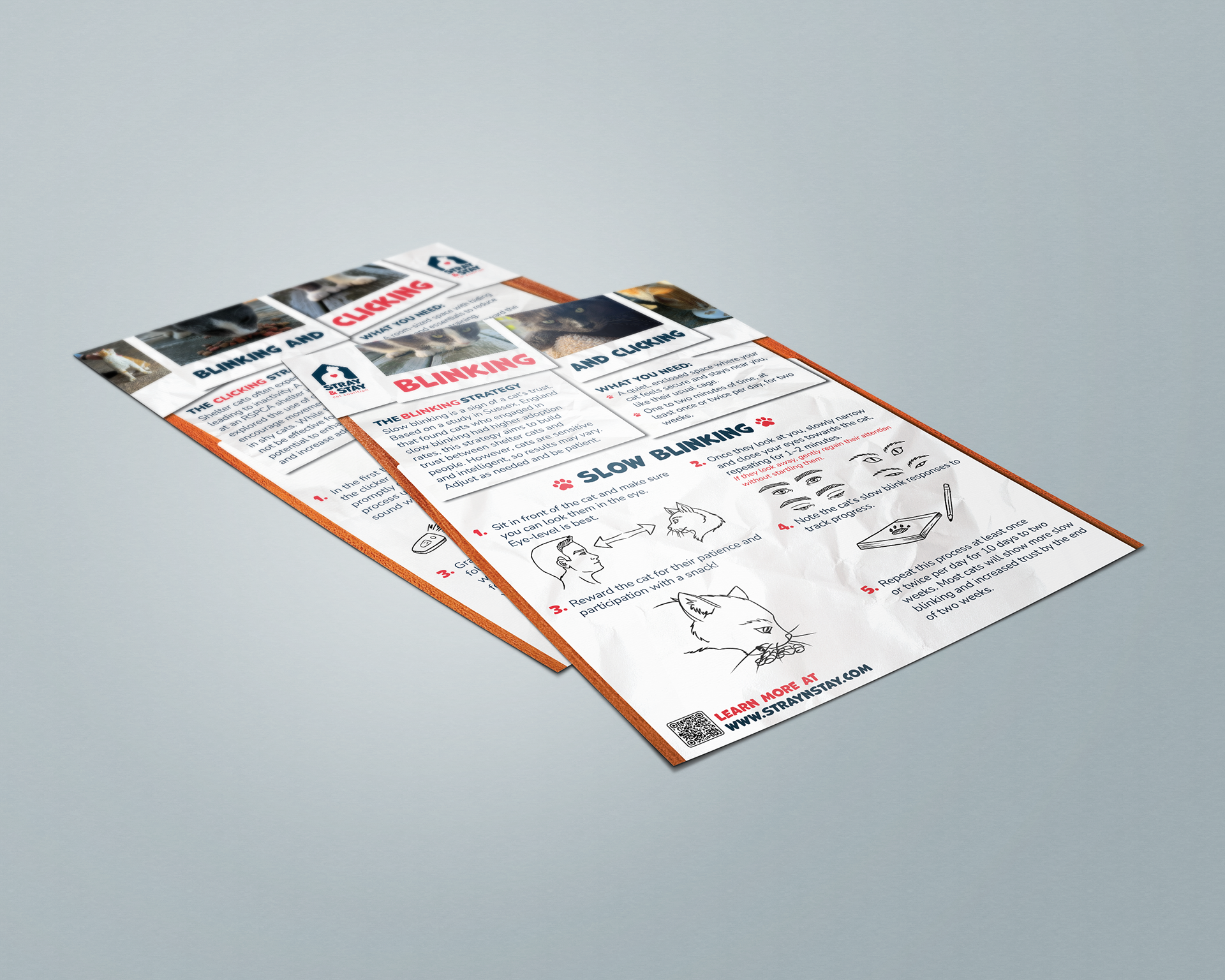
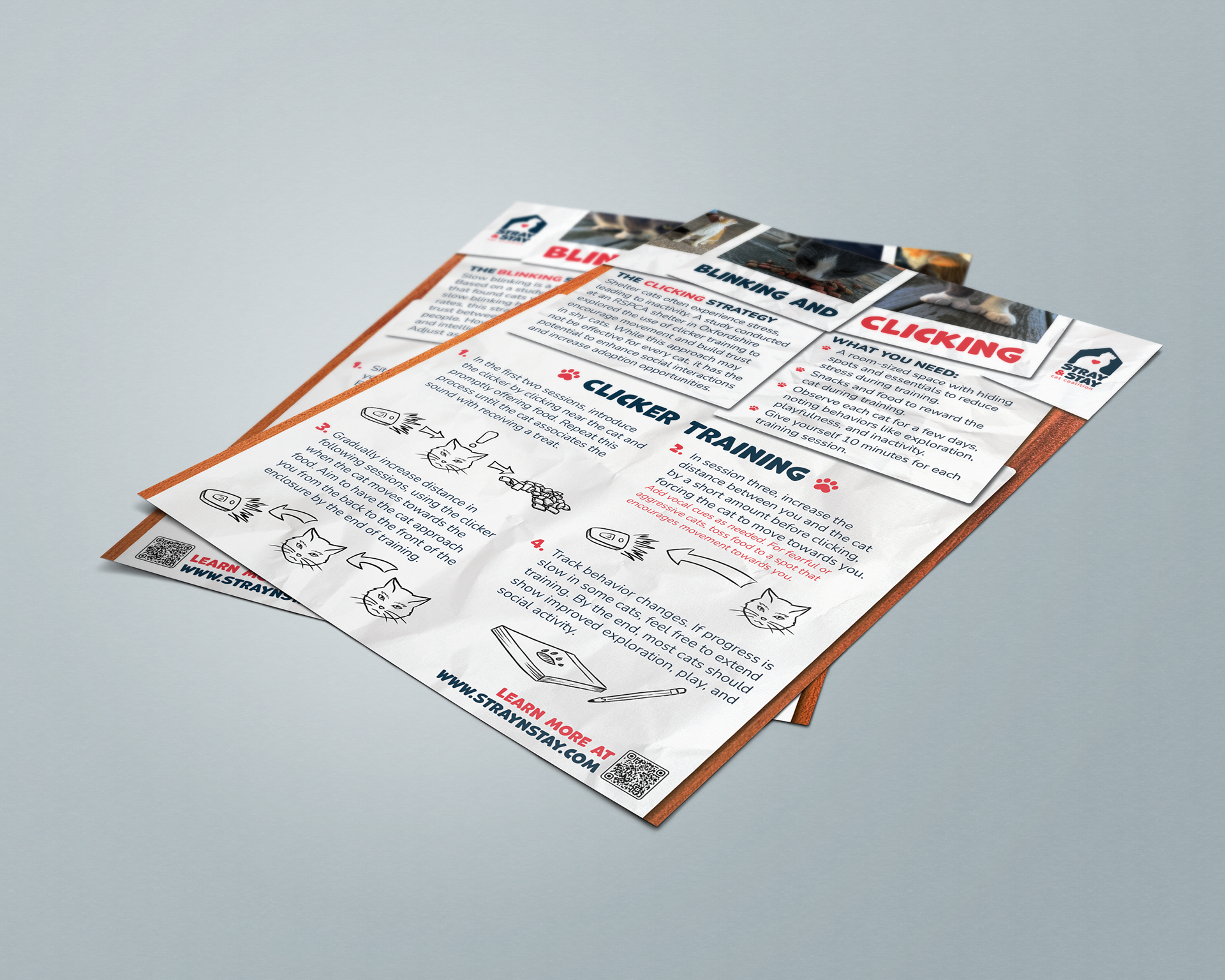
Blinking & Clicking Strategy Posters
This next item is a pair of strategy posters that addresses personality-based adoption challenges. I chose posters to make them easy to display in shelters for quick reference and was further inspired by the Community Cat infographic poster in the case studies.
The Blinking poster is based on a study from my research that showed slow blinking—a behavior cats use to communicate trust—had a direct impact on a cat’s sociability, and in turn their adoptability. This poster makes use of that study’s methodology to create a simple-to-follow strategy that potentially could improve a cat’s trust in the people around them.
The Clicking poster is based off another study where 12 timid or aggressive cats underwent two weeks of clicker training, associating the clicker sound with food rewards to encourage interaction. This poster also makes use of that study’s methodology to help shelters work with difficult cats to make them or friendly and adoptable.
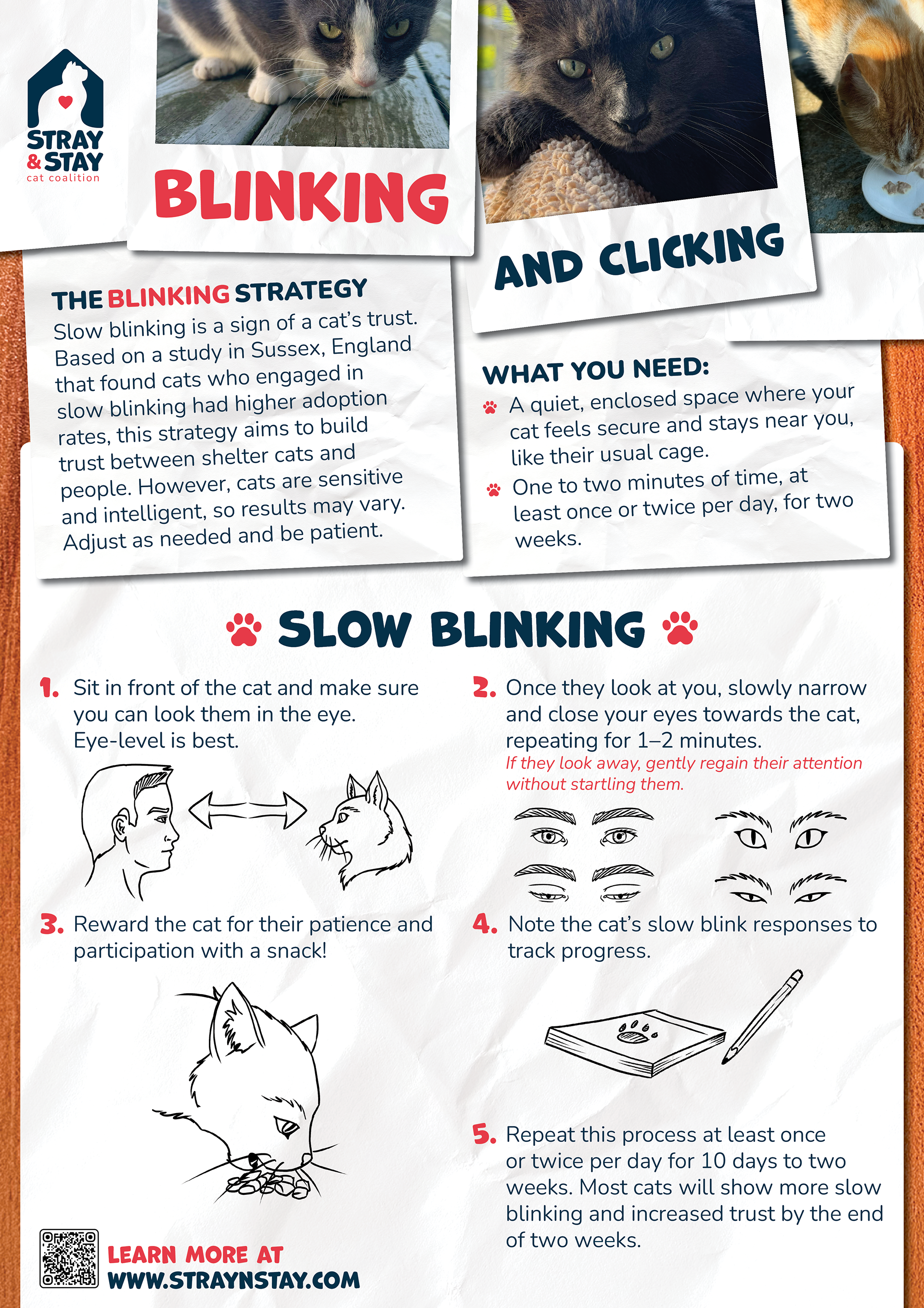
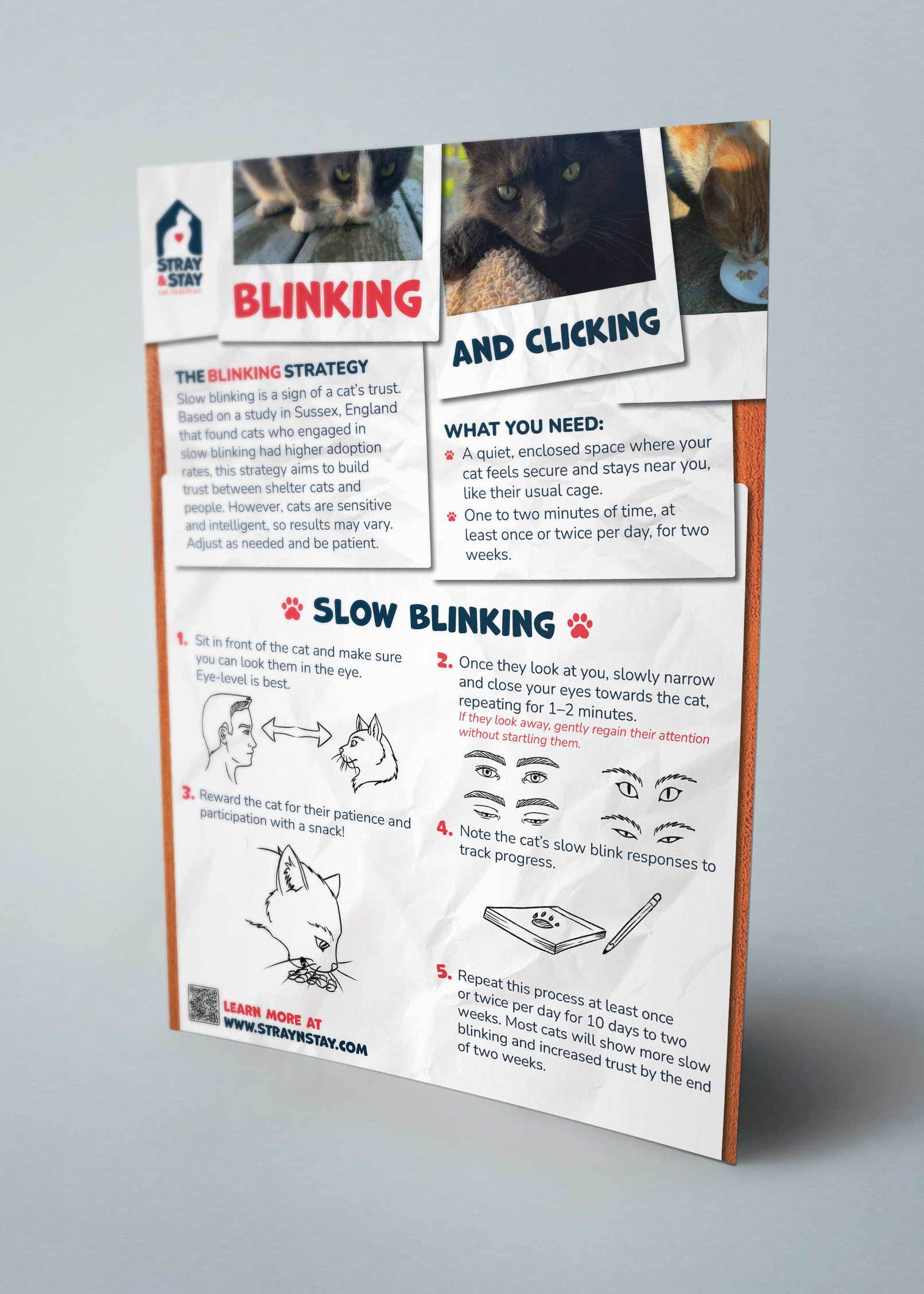

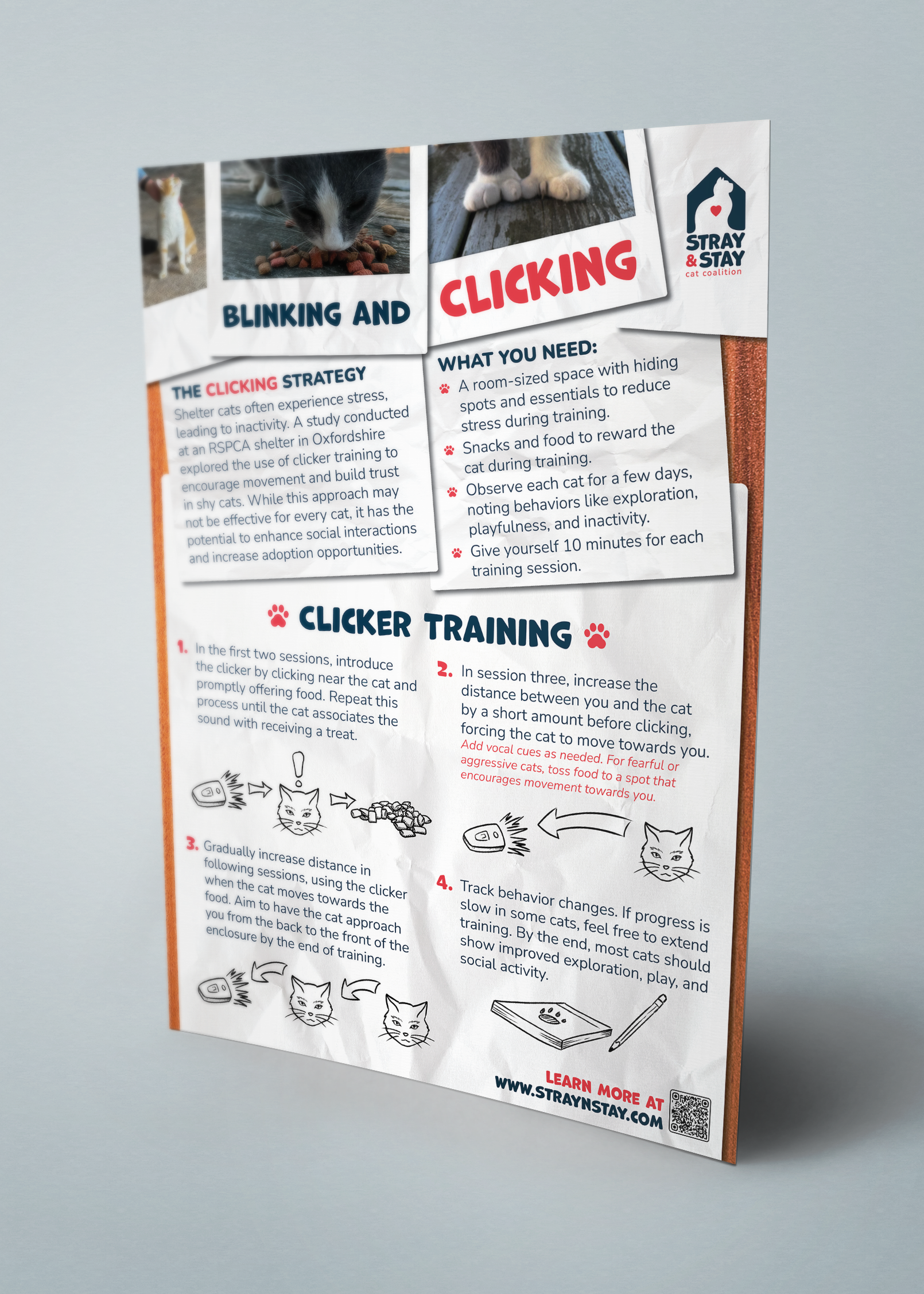
-- -- -- -- -- -- --

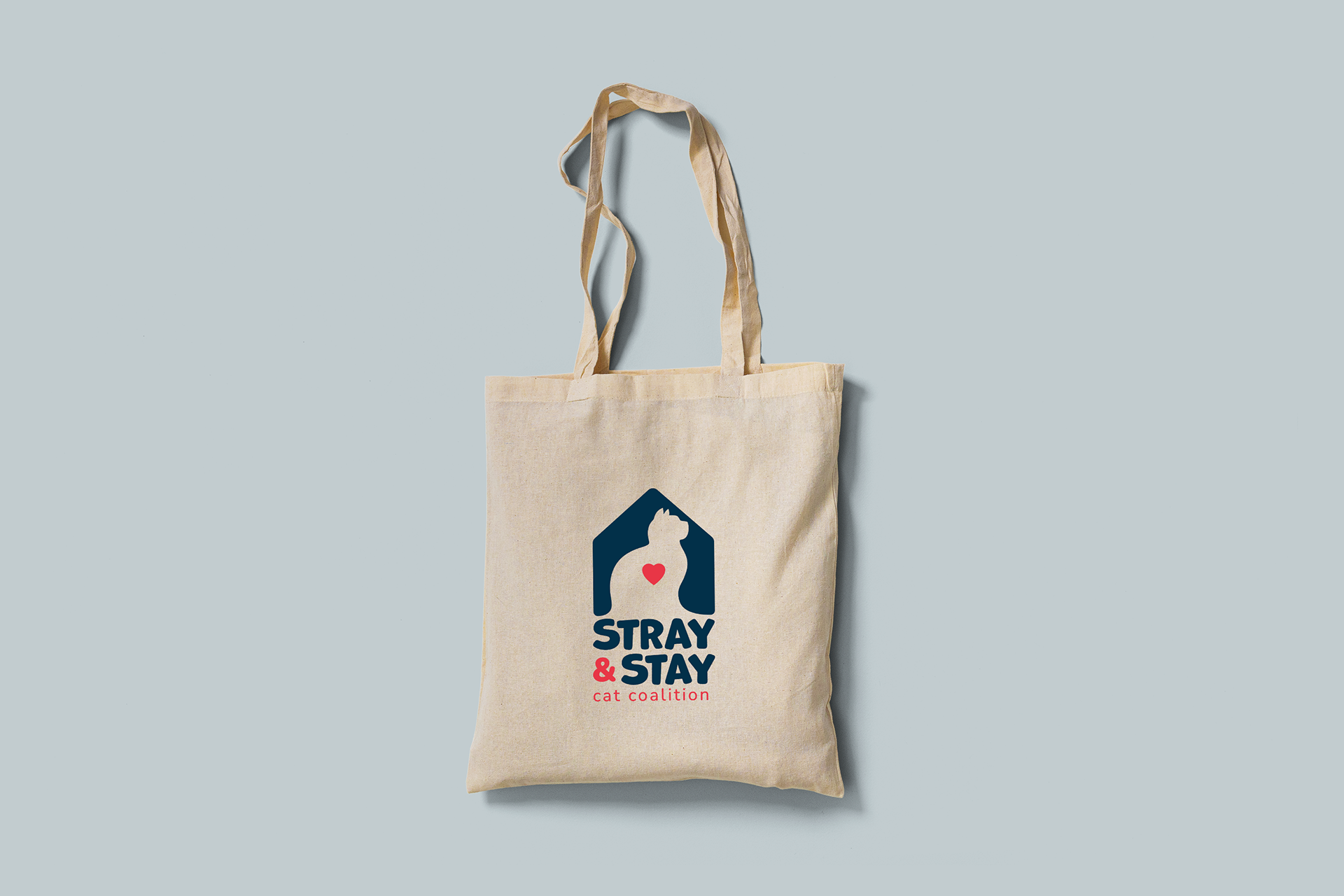
Branded Gear for Humans and Cats
These next items in the Tool Kit are meant to add a personal touch and bond with the Kit’s recipients, including branded gear for both humans and cats.
On the human side, the Tool Kit includes a t-shirt, tote bag, coffee mug, and socks that make use of Stray & Stay Cat Coalition’s logotype in various forms or colors. The tote bag also serves as the Tool Kit’s packaging, making it easy to carry all the materials together. In addition, a repeatable pattern was created and applied to a pair of socks.
On the cat side, the Tool Kit includes a set of three mouse toys, a catnip ball, and red collar. The labels incorporate the Polaroid aesthetic from the rest of the kit with key item details and a simple call to action: “Help Us Help Cats!” and then linking to the Stray & Stay website.
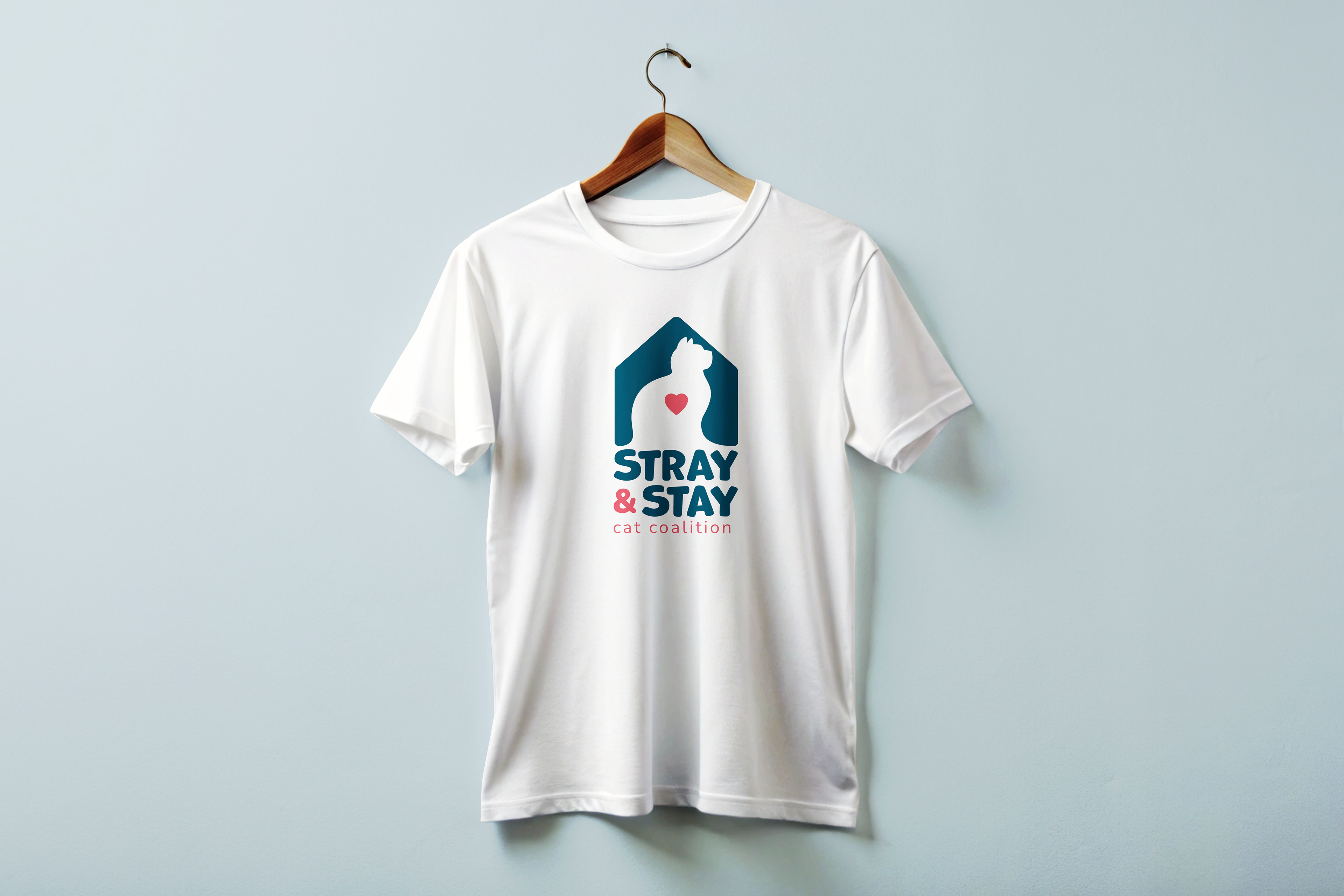
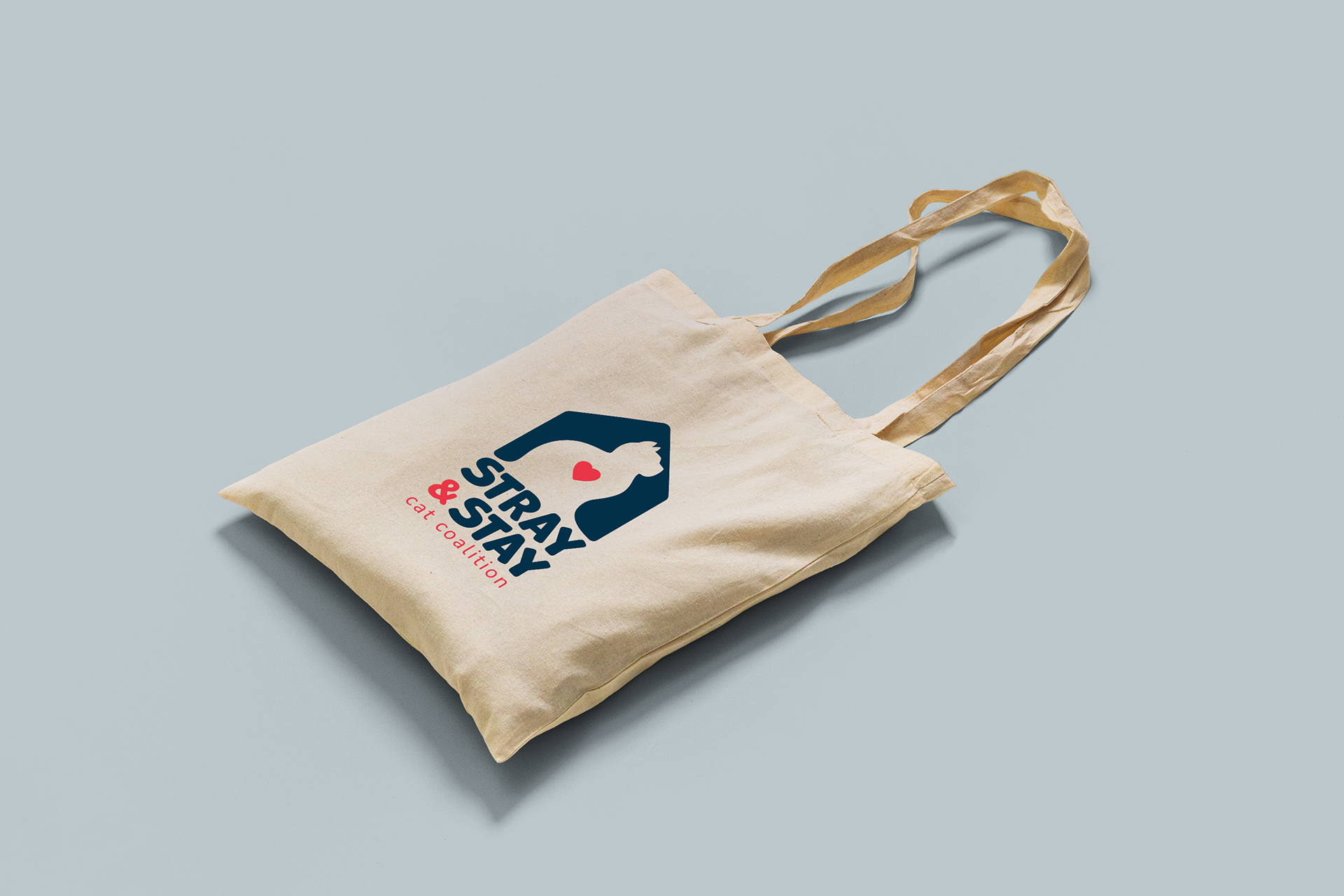
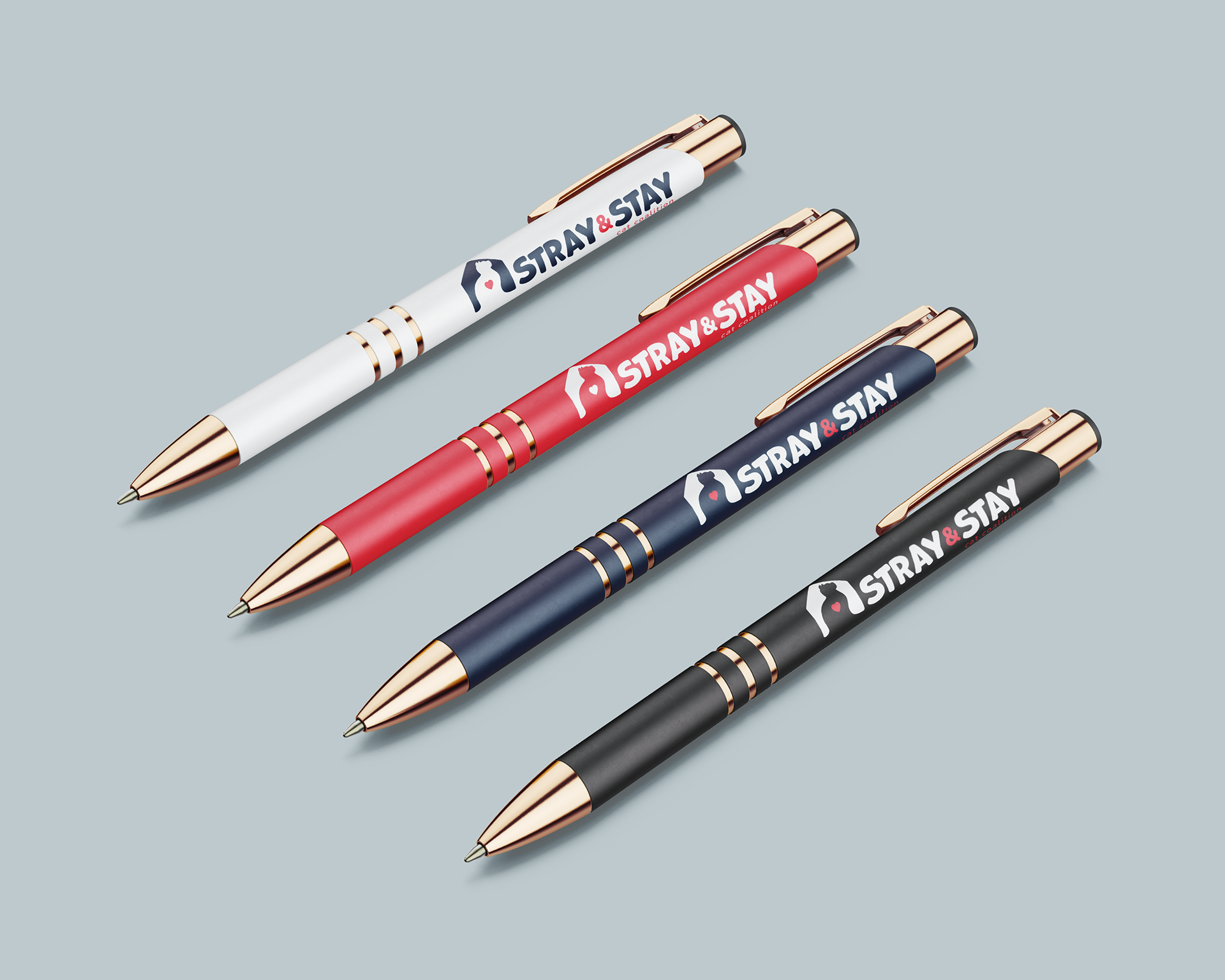

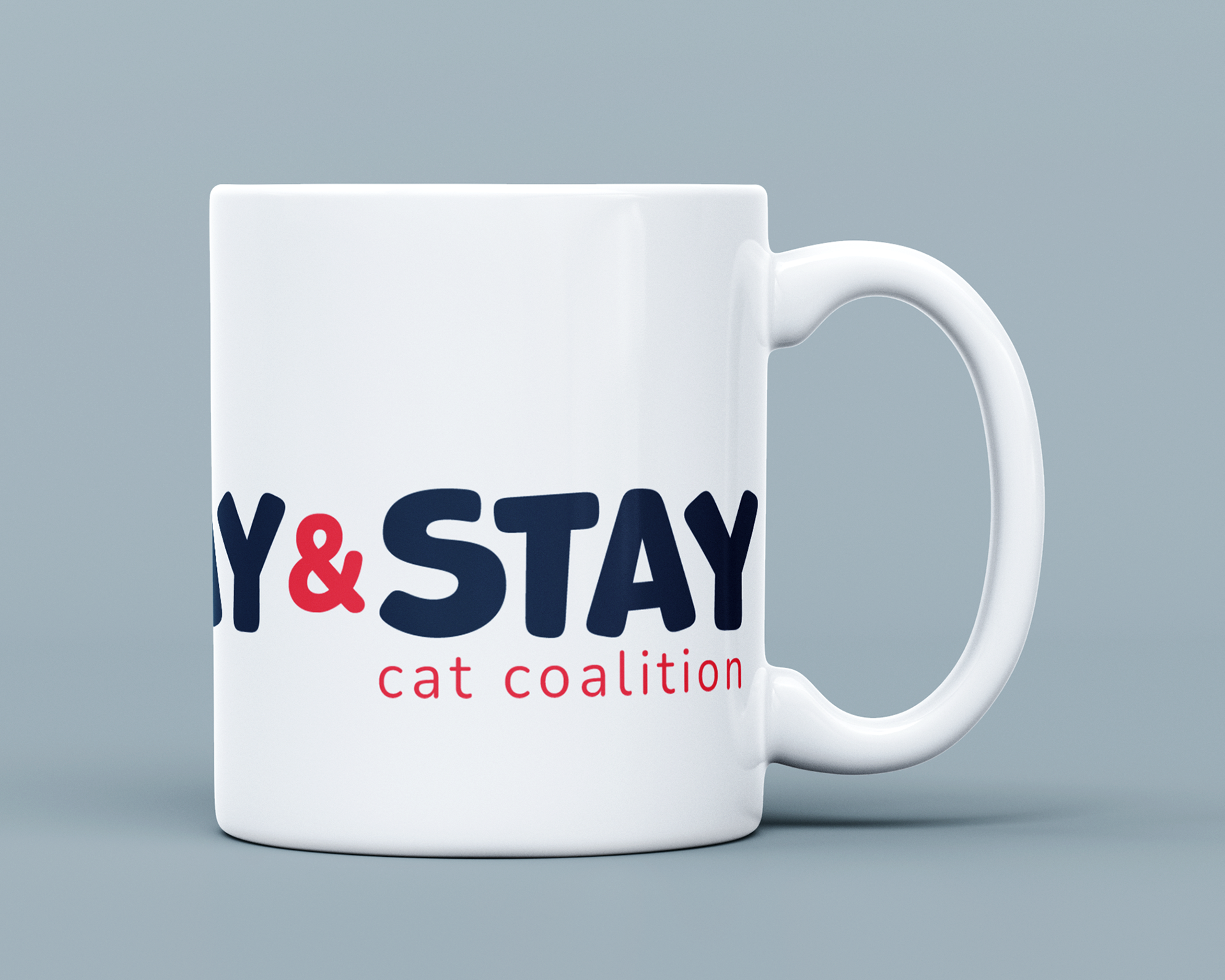
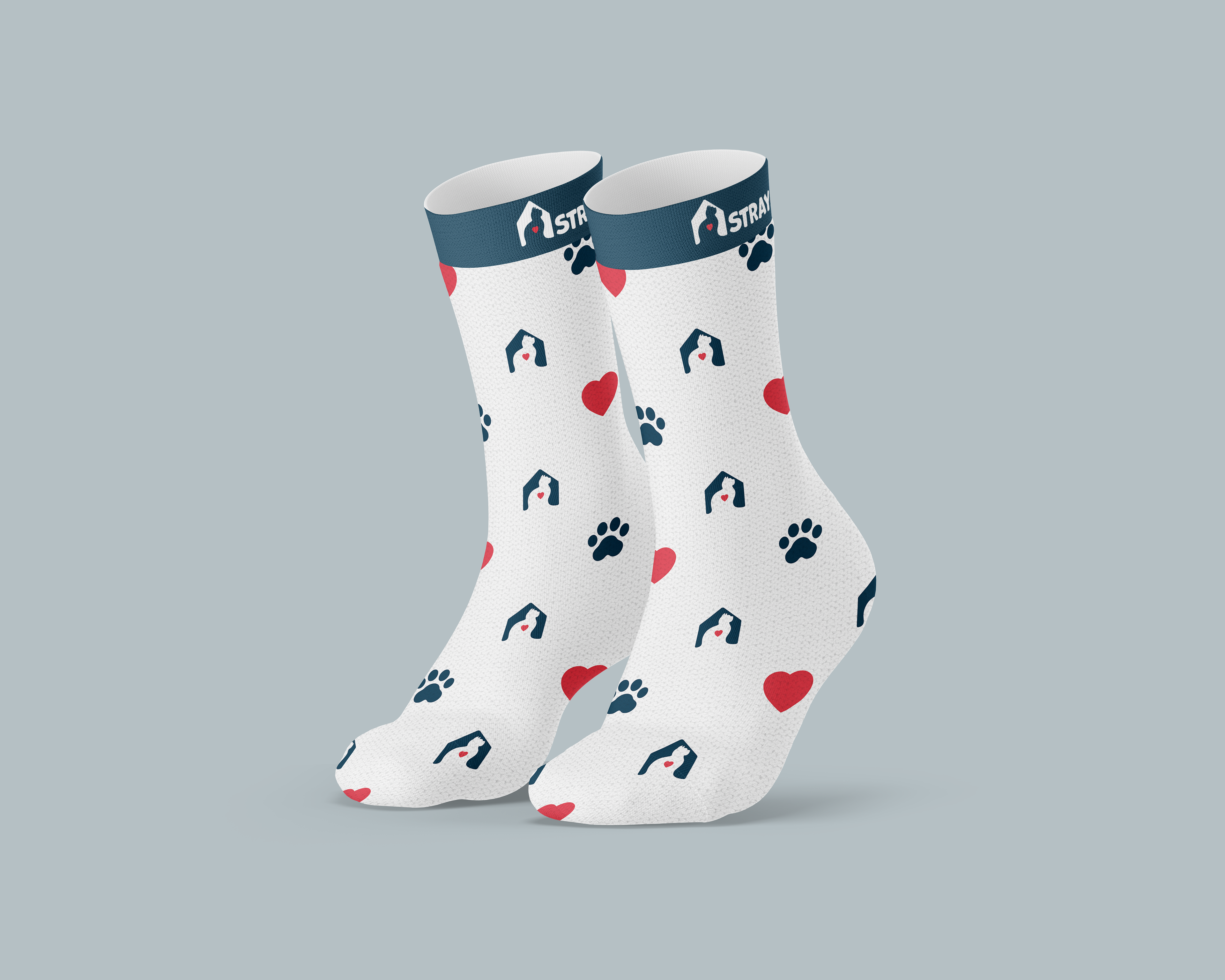


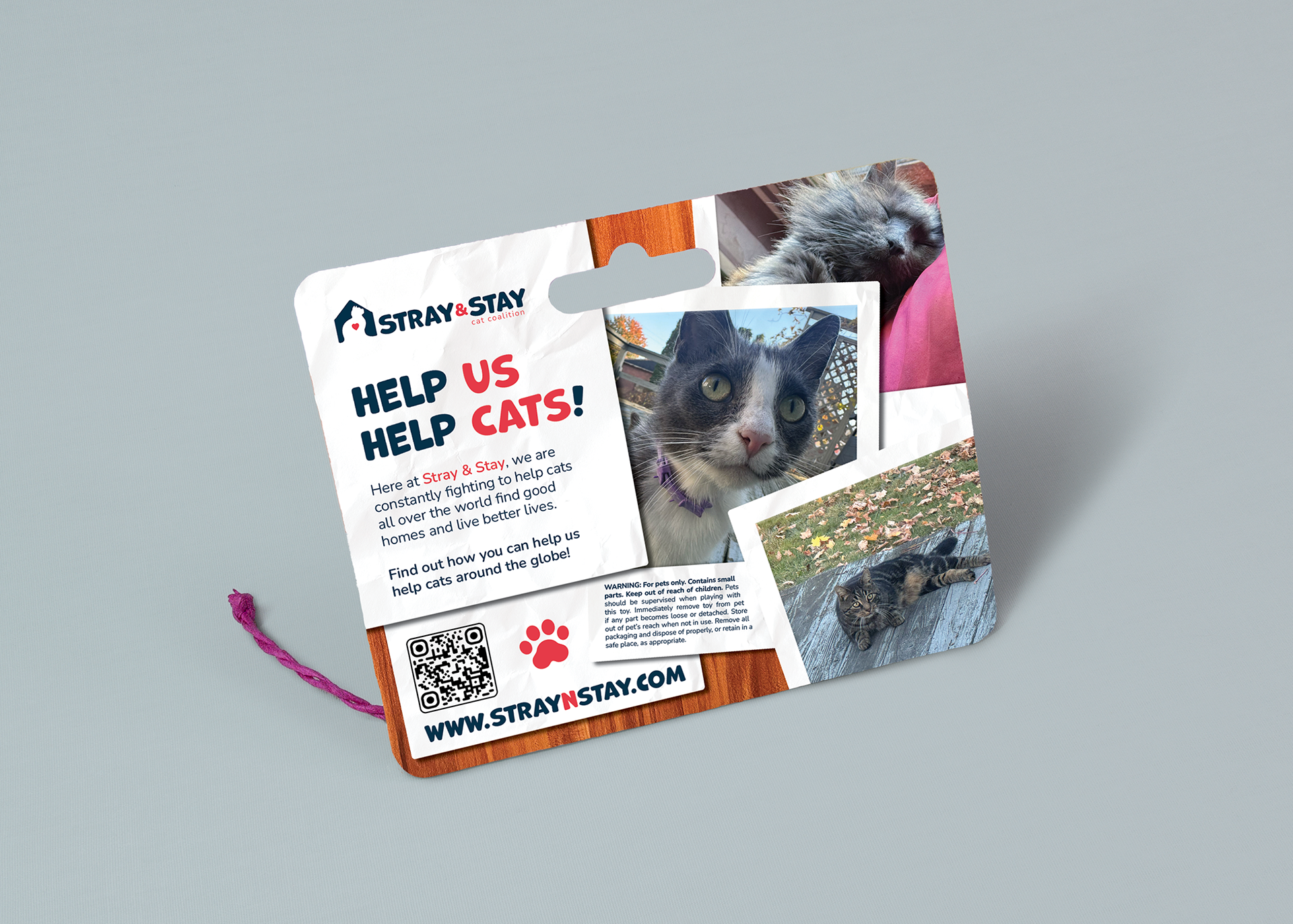

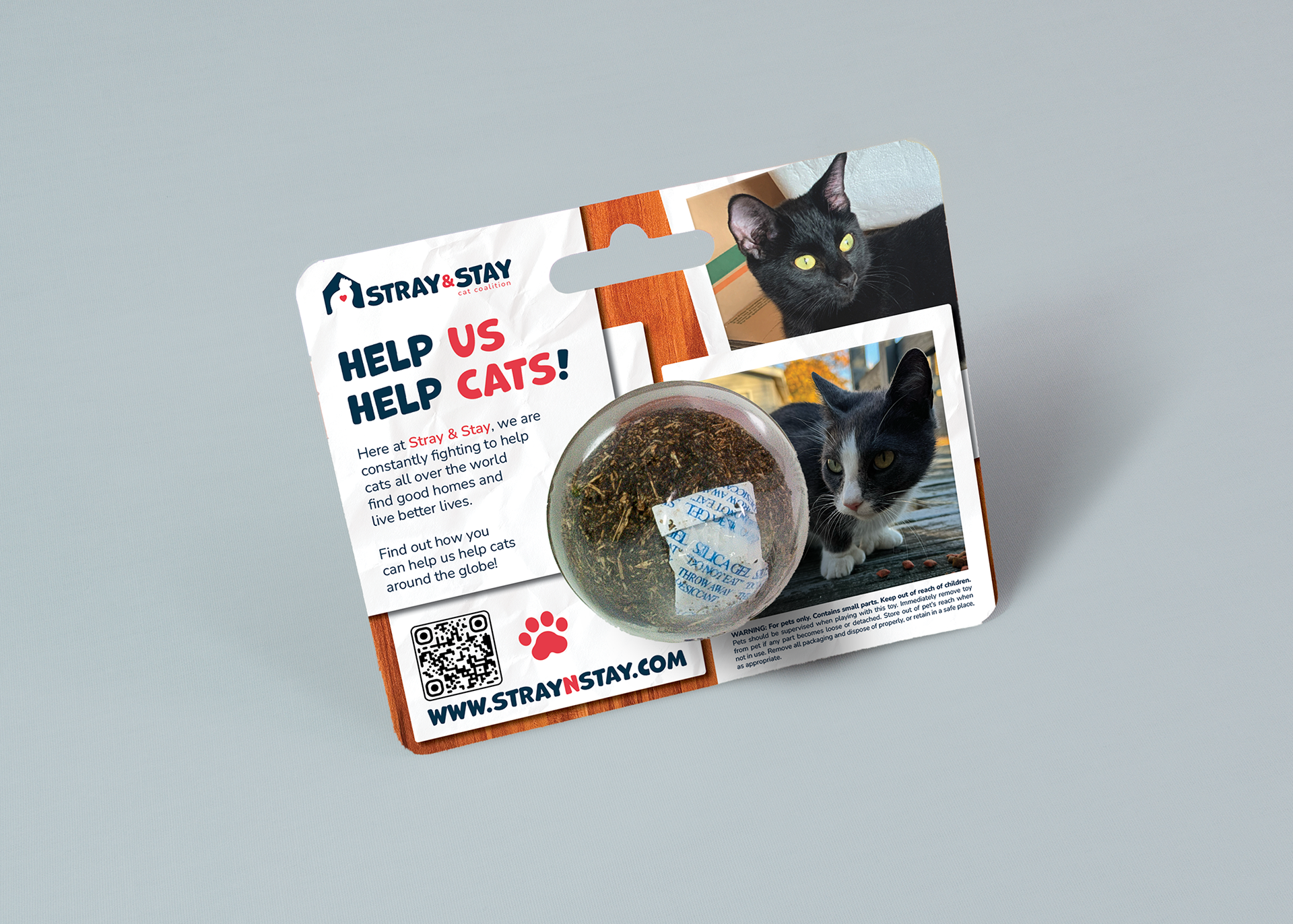
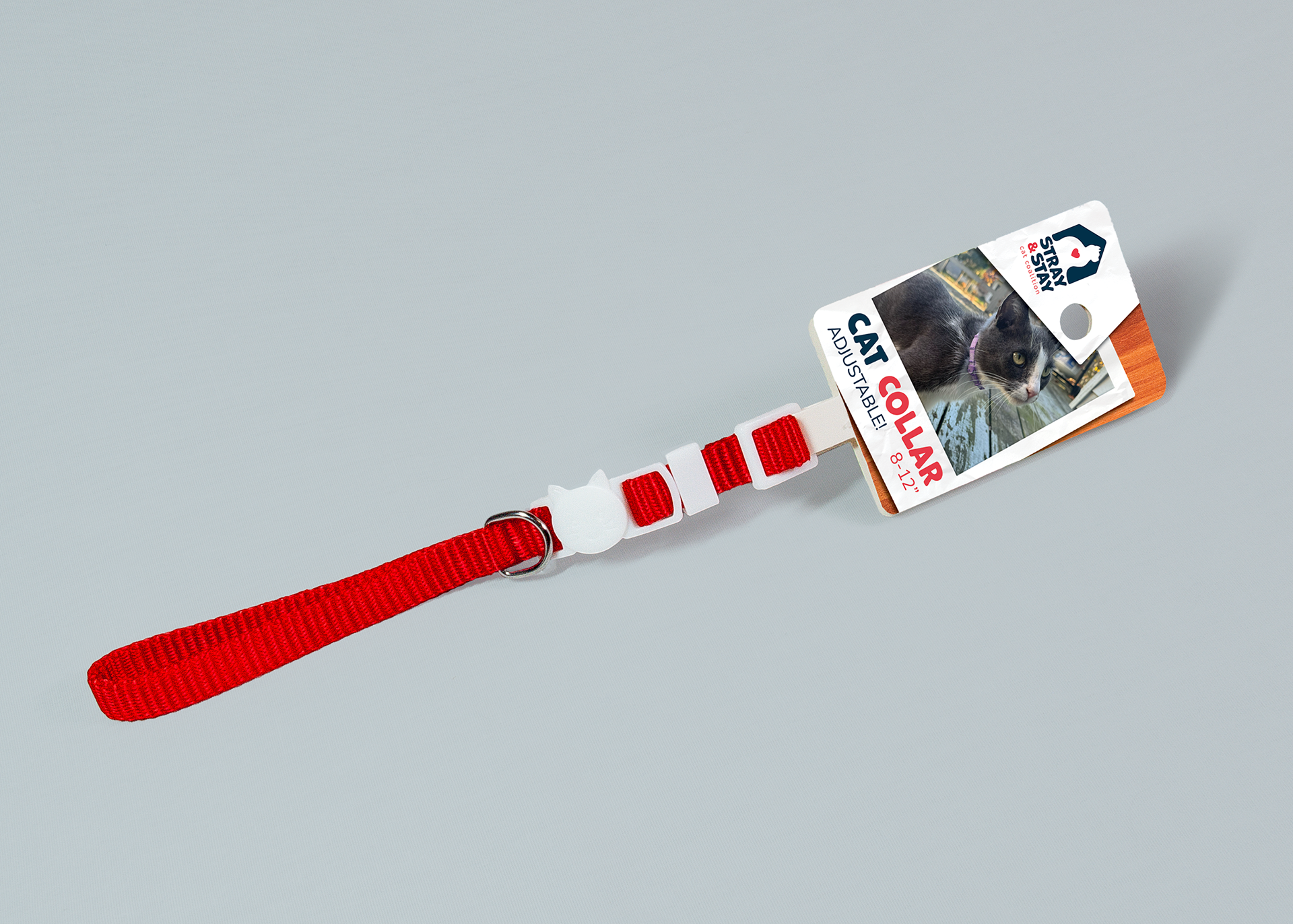
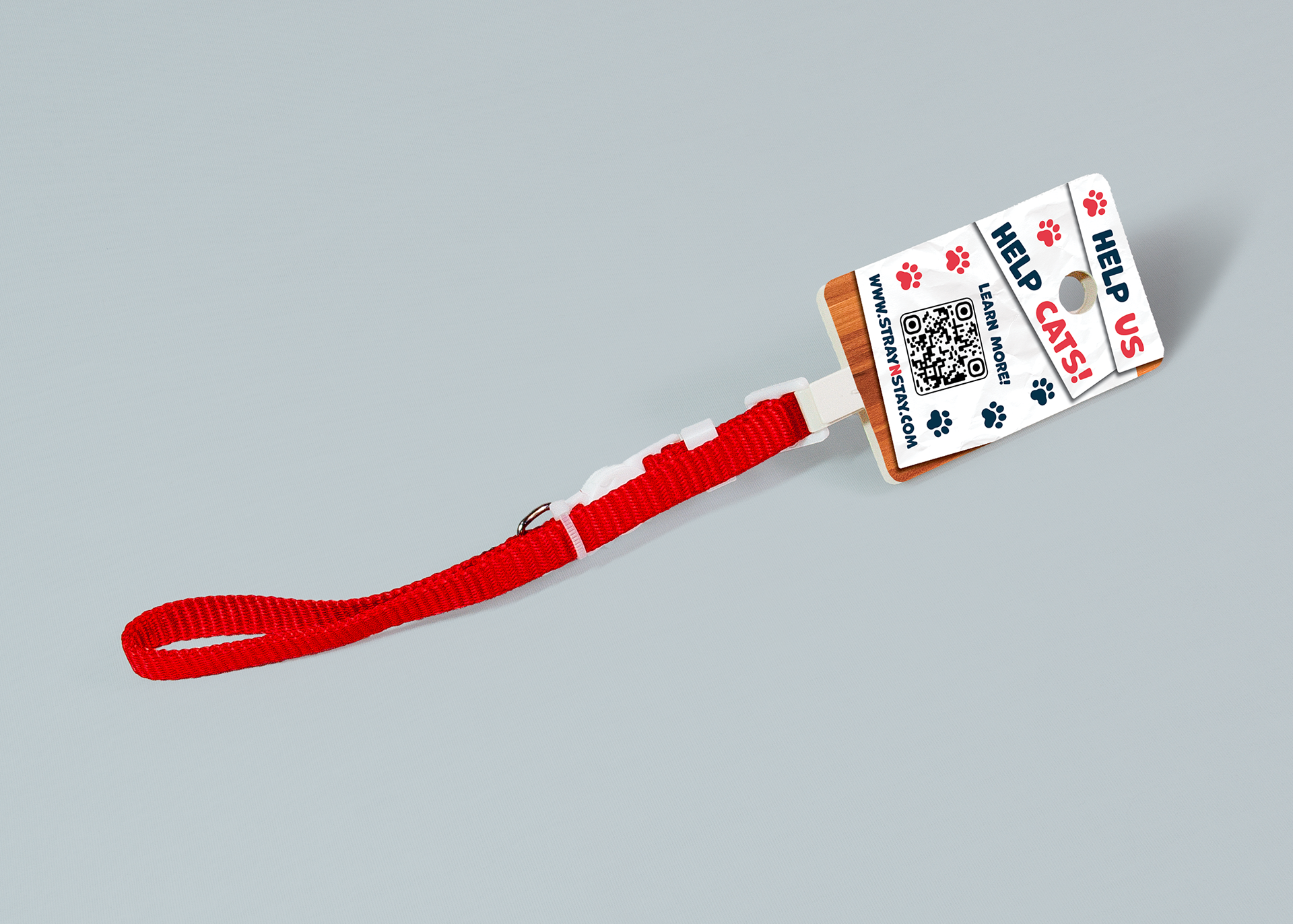
-- -- -- -- -- -- --

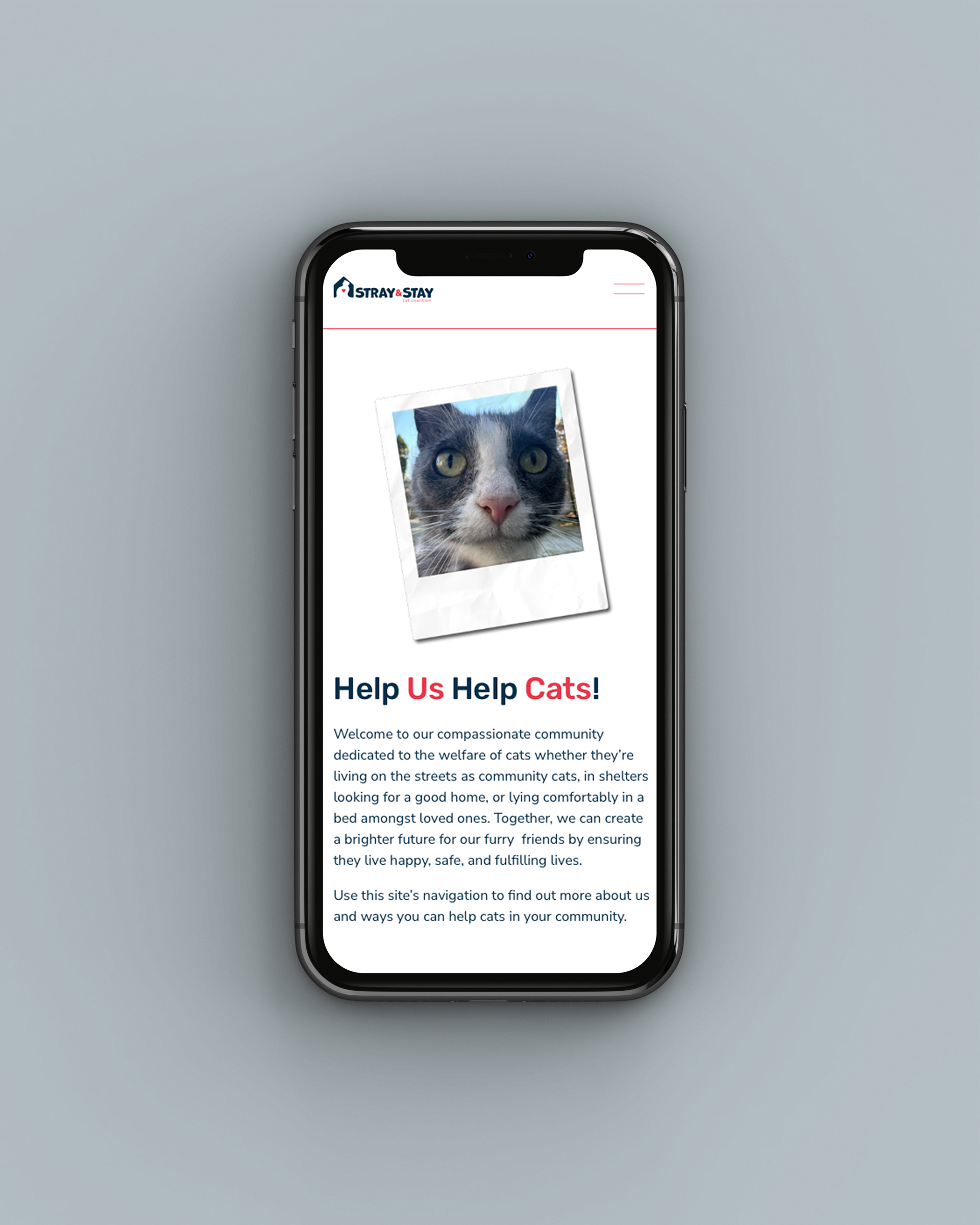
Stray & Stay Resource Website
The final piece of the Tool Kit is the Stray & Stay Resource Website. This website is a minimal, polaroid-themed hub for the Tool Kit’s informational content. At straynstay.com, users can learn about the brand, explore key topics like Trap-Neuter-Return and Adoption Risks, as well as download free PDFs of all materials from the kit.
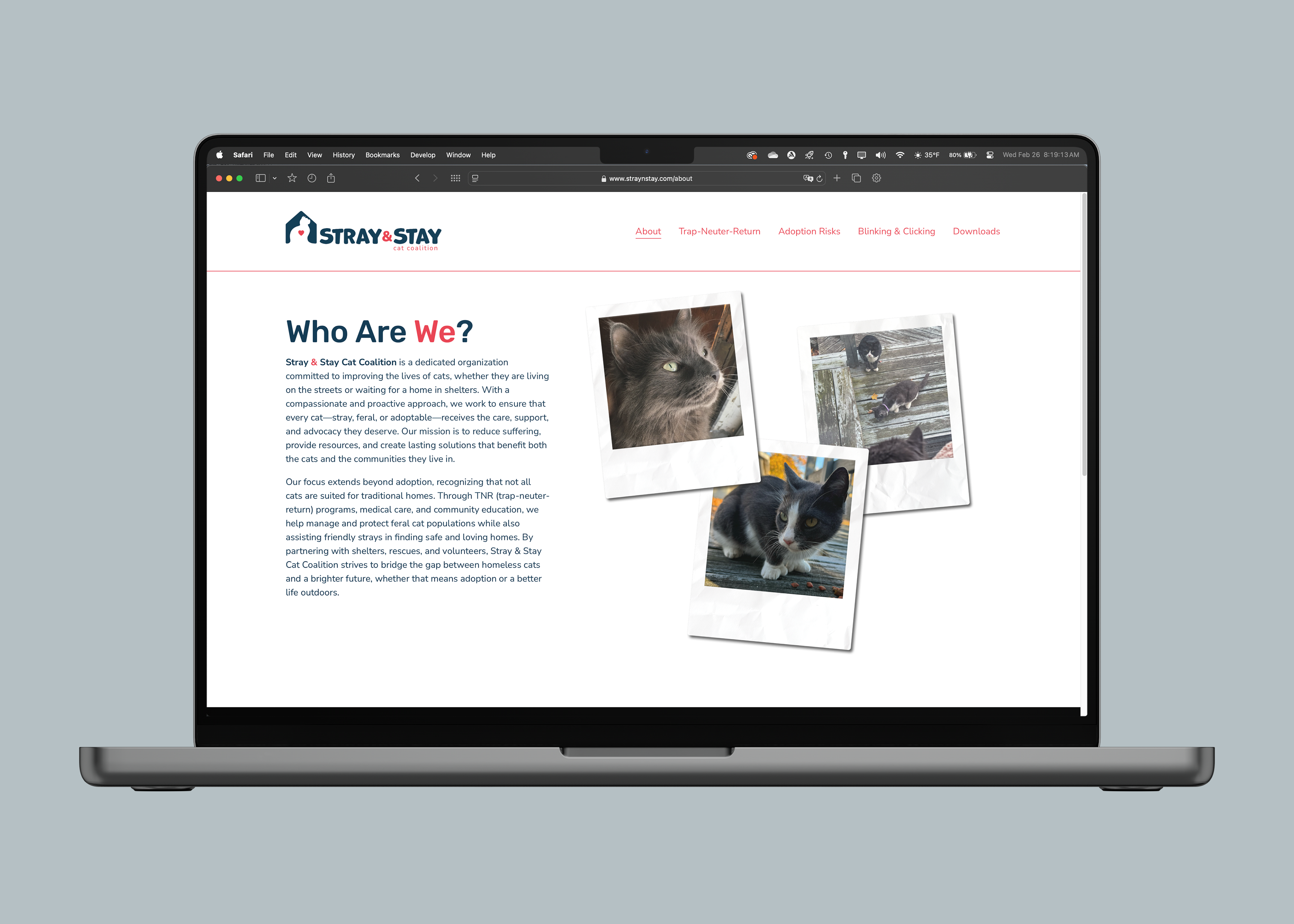
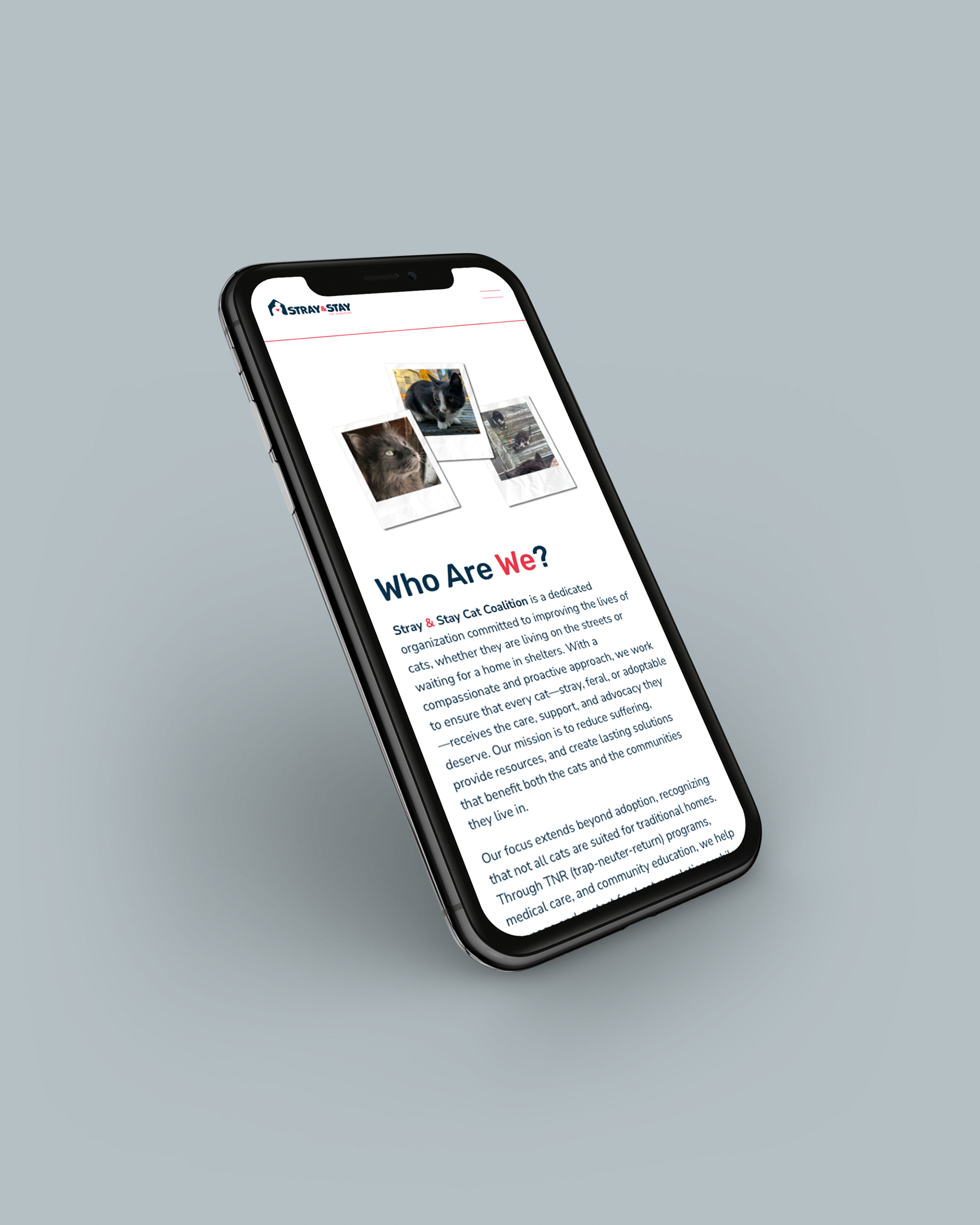
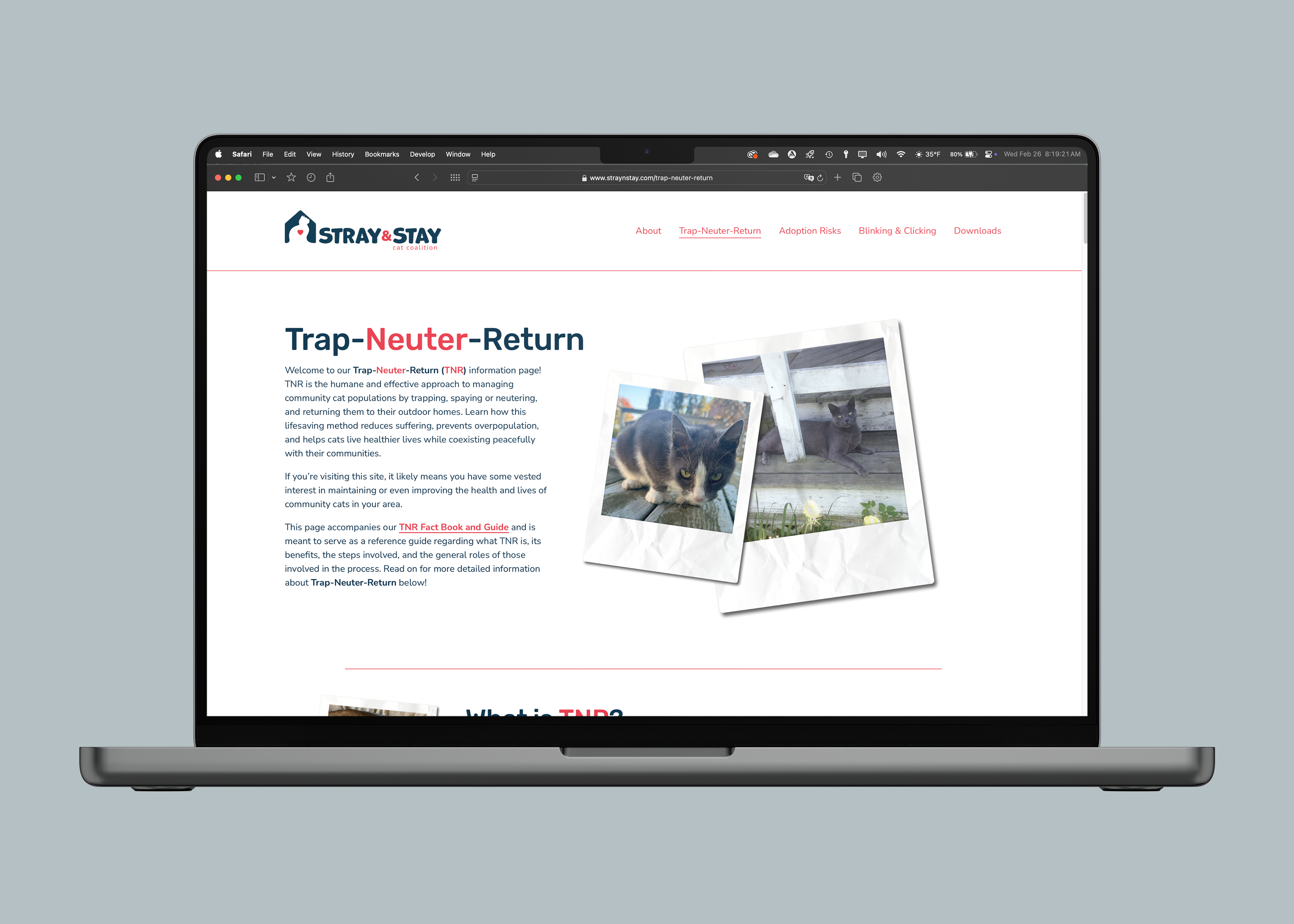
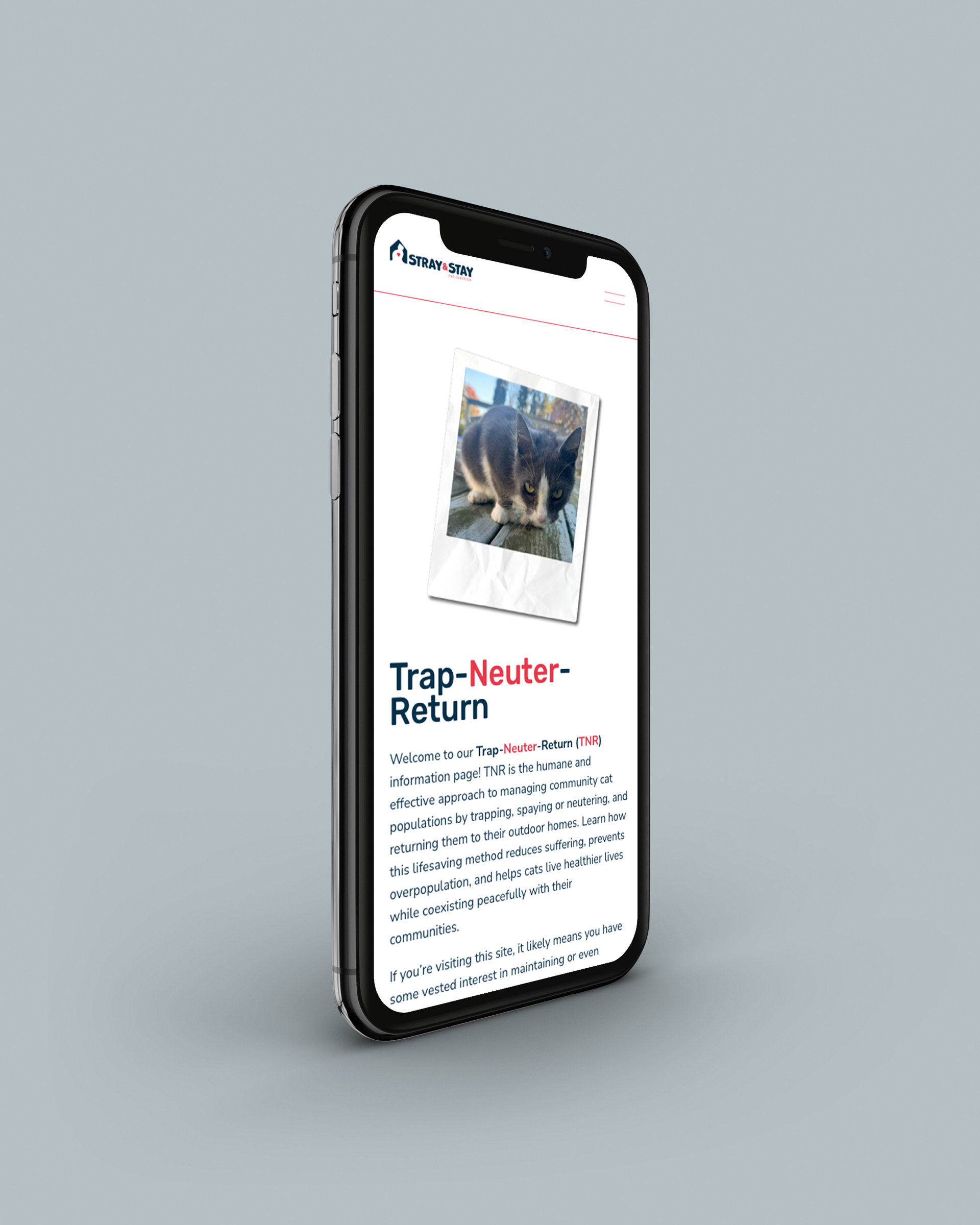

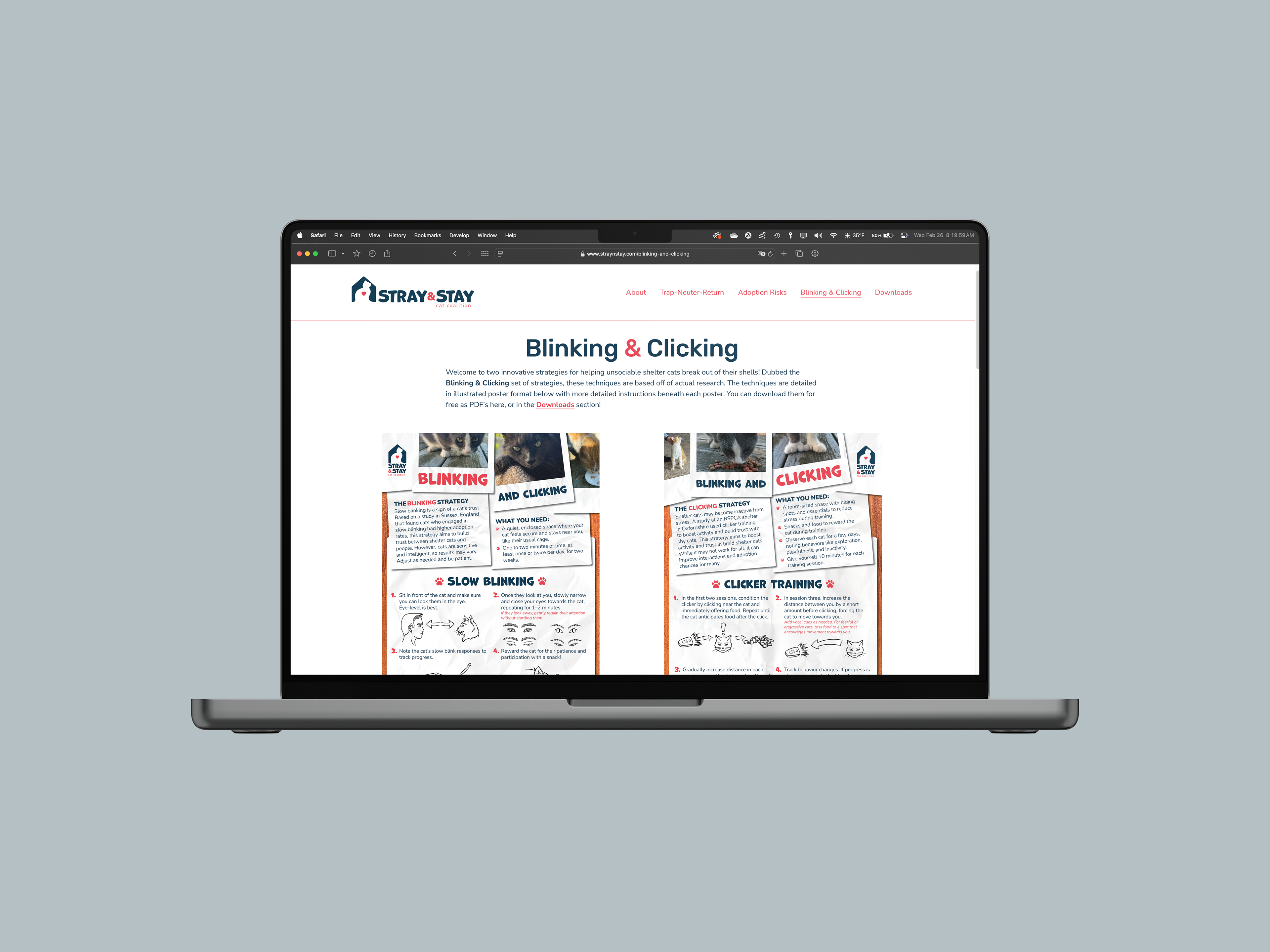

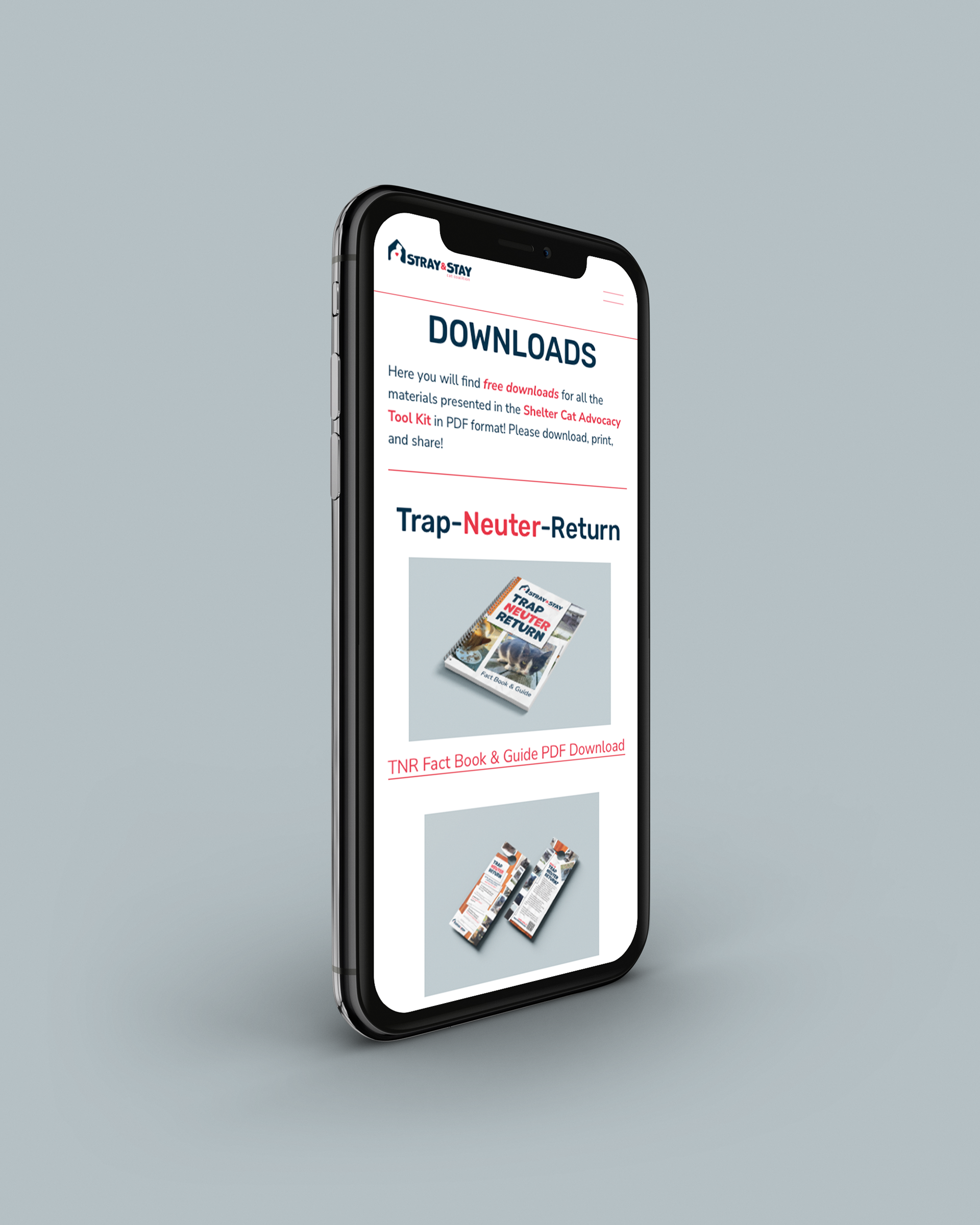
-- -- -- -- -- -- --
CONCLUSION
In conclusion, despite years of effort from animal welfare professionals and advocates, overcrowding in shelters remains a major issue across the United States. With shelter cat intake still exceeding adoption rates, this results in strained resources that often leads to unnecessary euthanasia. While progress has been made, the problem persists.
To better understand and address this issue, my research explored both shelter intake and adoptions. On the intake side, Trap-Neuter-Return has proven effective at reducing feral cat populations—the primary source of incoming shelter cats. On the adoption side, factors like age, coat color, breed, and personality significantly impact a cat’s chances of finding a home.
In response, I created the Shelter Cat Advocacy Tool Kit, a print-based solution designed to support cat advocates and animal welfare professionals.
Throughout this project, I’ve gained a profound appreciation for the work shelters do every day. It’s my hope that this Tool Kit can one day serve as a valuable resource for those working to give cats healthier lives and better chances at adoption. Looking ahead, I hope to see Stray & Stay Cat Coalition grow into a real-world organization—standing alongside leaders like Alley Cat Allies, American Humane, and iHeartCats in championing the welfare of cats worldwide.
With continued development, it could expand its reach to educate and engage families and communities, building a future where every cat has a chance to thrive.
-- -- -- -- -- -- --
If you are interested in learning more about my research, the development of visuals, and more, please download the full thesis PDF, found below. Thank you!
Disclaimer: The content on in this thesis is for informational purposes only and is part of a thesis project exploring theoretical solutions for the issue of shelter cat overpopulation. While the ideas presented are based on research and analysis, they do not represent an active program or definitive solution. Its creator is not liable for any outcomes, consequences, or actions taken based on the information provided here.

